5 Reasons Why Your Cruise Control Stopped Working
- Updated: March 15, 2023
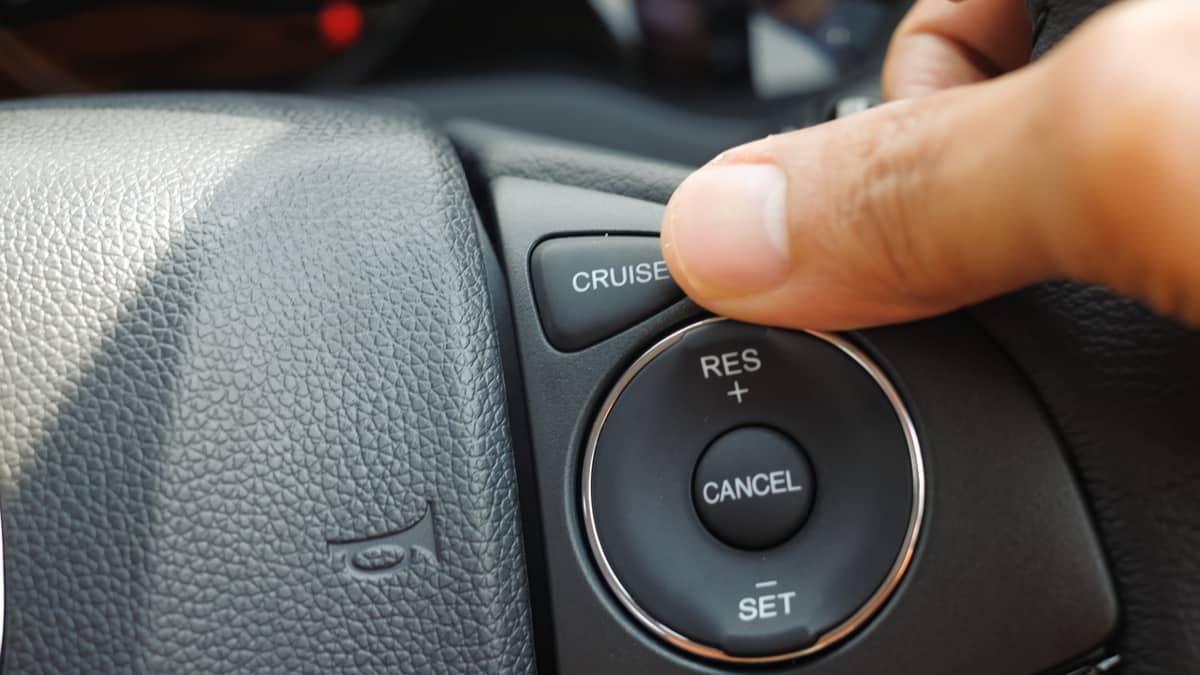
It would be difficult to find a vehicle on the road today without cruise control. This invaluable feature makes driving long distances easier but can also cause trouble when it malfunctions. Understanding the reasons your cruise control stopped working ensures that you can get the problem fixed quickly for a more enjoyable ride.
While this fault can cause issues with the cruise control system itself, there could also be an effect on the acceleration of your vehicle. That’s why you want to have it looked at as soon as you notice a problem. Let’s take a quick look at the reasons your cruise control may have stopped working.

Reasons Why Your Cruise Control Stopped Working
The most common reason a cruise control stops working is due to a blown fuse or a defective brake pedal switch . It can also be caused by issues with the throttle control system or the ABS. In older cruise control systems, it can be caused by a broken vacuum line.
Here is a more detailed list of the possible reasons your cruise control is not working:
1. Blown Fuse
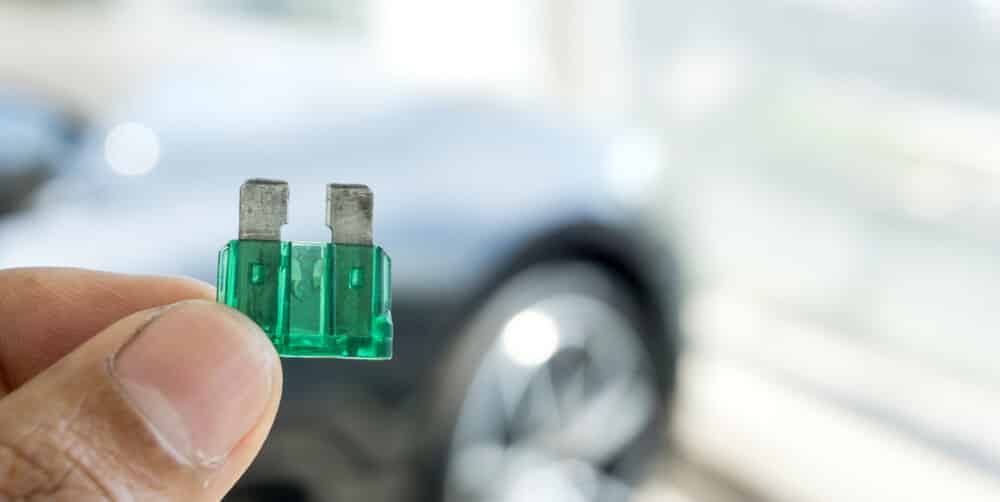
All electrical systems in the vehicle are controlled by fuses. Your cruise control system is attached to a fuse that can blow if there is a short circuit or fault. Without a good fuse, the cruise control system can’t work at all.
Thankfully, it’s not difficult to find and replace a blown fuse. Look in the owner’s manual to find the fuse that corresponds with the cruise control technology.
2. Defective Brake Pedal Switch
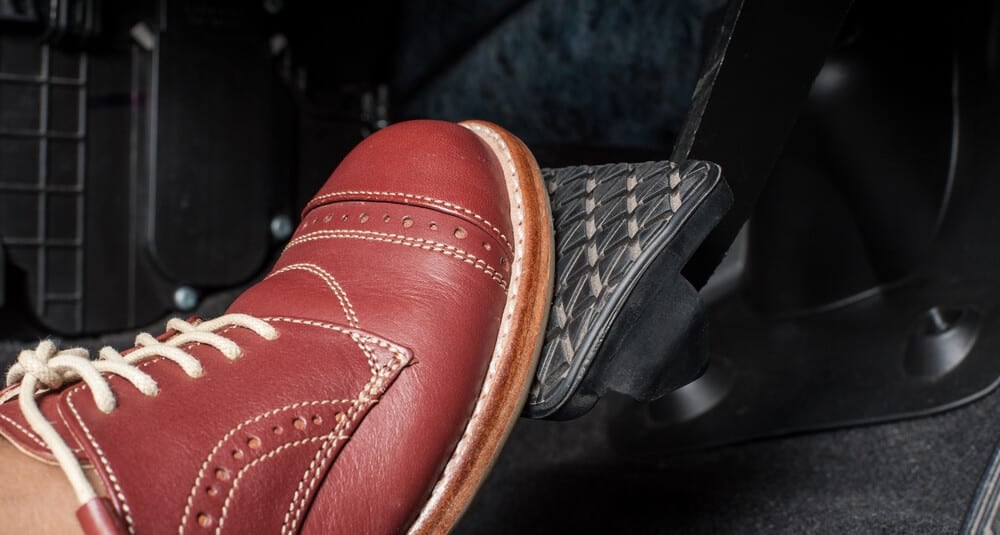
The brake pedal switch is responsible for turning the brake lights on and off based on the pedal position. Cruise control systems are designed to disengage whenever your brake pedal gets pressed.
Because the cruise control is wired into the brake pedal switch, any fault can cause it to stop working. When the brake pedal switch malfunctions, the car believes the brakes are engaged, causing the system to turn off automatically. Not only that, but your car’s brake light might also be stuck on, leaving confused drivers in your wake.
3. Malfunctioning Speed Sensor
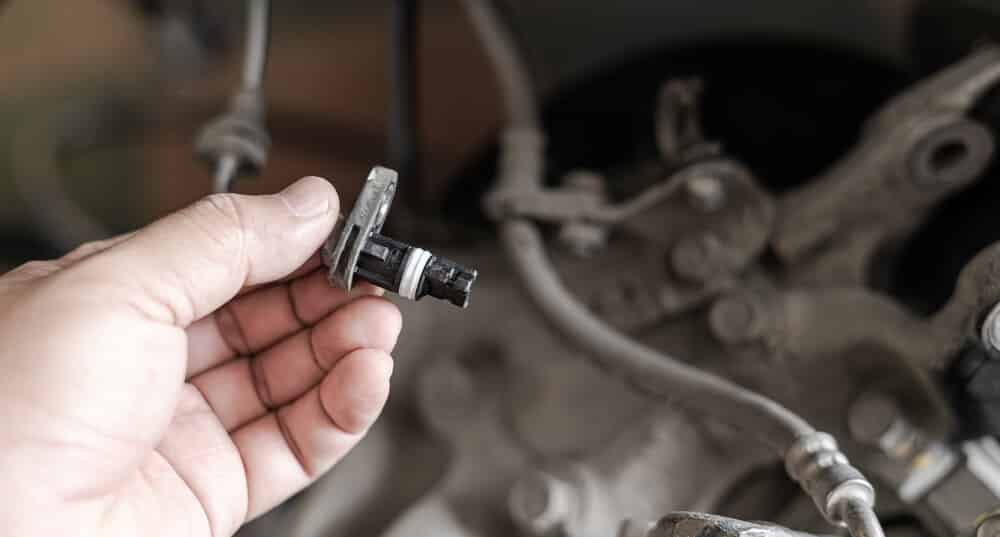
Speed sensors are located on every wheel or differential. The purpose of these sensors is to monitor the speed of the wheels to determine if traction control is needed.
The speed sensors are also part of the cruise control system. When a sensor fails, the cruise control can stop working and the speedometer might act strange as well.
If there is an issue with a speed sensor, it will often show with an ABS warning light or a check engine light on the dashboard.
RELATED: 3 Symptoms of a Bad ABS Wheel Speed Sensor
4. Electrical Issues
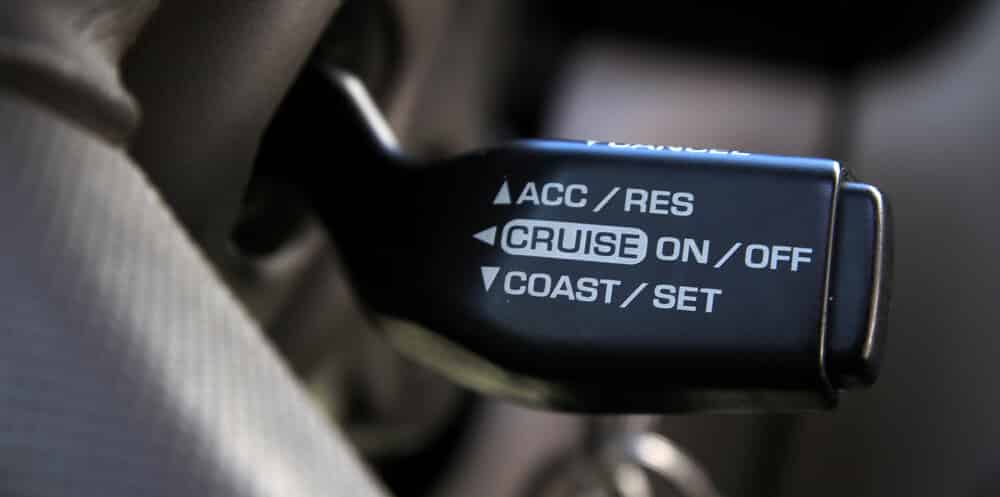
The cruise control system is electronic, with many components working together to make the system operate. If the cruise control fails to work, you want to check the wiring harness and associated connectors for a fault.
You also need to ensure that the voltage source is supplying enough power to the system. Even the smallest fault can cause defects with the cruise control. In many cases, there can be an issue with the cruise control lever or buttons causing the cruise control to not engage.
If your cruise control buttons are located on the steering wheel it could also be caused by a bad clock spring, which is located behind the steering wheel.
Check the system with an OBD2 scanner to look for any trouble codes related to the cruise control.
RELATED: 5 Symptoms of a Broken Clock Spring, Location & Replacement Cost
5. Damaged Vacuum Actuator, Hoses or Cable (Older cruise control)
If you drive an older vehicle with cruise control, you might have an issue with the vacuum actuator or the cable that connects to the throttle. If there has been damage done to the vacuum hoses or the actuator, the cruise control will stop working altogether.
Additionally, the cable linking the actuator to the throttle must be in good shape. If it has been broken, the cruise control will fail.
What is Cruise Control?
Cruise control is a feature that is used when you are traveling at a consistent speed. Cruise control was first introduced for automobiles in the 1950s. However, it took many years before it became a staple in the modern vehicle.
This electrical system allows you to set a predetermined speed and take your foot off of the gas pedal. If you are on a long drive, there is less fatigue because you don’t have to try to maintain your speed. Cruise control can also benefit fuel economy because the vehicle uses less fuel when traveling steadily.
In newer cars, you might be able to find adaptive cruise control , which is a smart technology. Adaptive cruise control allows you to travel at a predetermined speed, but it also helps to maintain a safe distance from the vehicles in front of you with the help of sensors. With conventional cruise control, you need to take over when the car in front of you slows down, but that’s not the case with adaptive cruise control.
There are also vehicles nowadays with not only cruise control, but fully self-driving vehicles . We will most likely see much more of this in the future.
Cruise Control Repair Cost
The cost to repair your cruise control system depends on what caused it to fail. If you need to replace a cruise control or brake switch, you might spend between $125 and $350, including parts and labor. However, the cost to change a fuse is only a few dollars and you can perform the replacement yourself in just a matter of seconds.
On the other hand, when something major fails, such as the actuator, you could be looking at a much higher repair bill. In some vehicles, the cost to replace a cruise control actuator can cost more than $700. These costs rise if you drive a luxury vehicle or one that is difficult to get parts for.
It might not seem immediately important for you to fix the broken cruise control, but this defective system can affect other performance aspects. You could start to notice issues with acceleration or have trouble with the speedometer. To play it safe, it’s always best to have the cruise control repaired as soon as you notice a problem.
Is there a fuse for the cruise control?
Yes. If the cruise control is installed from the factory, you should check your car’s owner’s manual for the fuse location. If it’s an aftermarket cruise control, you’ll need to follow the wires to find the fuse.
Does the brake switch affect the cruise control system?
Yes. The brake switch affects the cruise control system. The brake switch sends a signal to the cruise control system to let it know when the brakes are being applied for the engine to know when it should stop accelerating.
Will the cruise control work if the check engine light is on?
The cruise control function will be disabled when the check engine light is on in most car models, even if the cause of the check engine light is not the cruise control itself. This is mainly due to safety reasons.
Can a vacuum leak affect cruise control?
Older vehicles use vacuum to control the throttle for the cruise control, and in this case a vacuum leak can heavily affect the cruise control. However, modern cruise controls are fully electric and in most cases will not be affected by a vacuum leak if the check engine light is not illuminated.
Although many people may think that the cruise control system is unimportant and not worth spending money to repair, the problem can be caused by a faulty part that will affect the engine’s performance or durability. Therefore, it is best not to ignore the problem if your cruise control is not working without first diagnosing the car properly.
If your cruise control still isn’t working after trying all the tips in this article, it’s probably time to take it in for a professional opinion from a mechanic. It may be a more serious problem that requires replacement parts or repairs. In the meantime, drive safe and enjoy the open road!
Learn more:
- Brake Lights Not Working But Tail Lights Are? (How to Fix)
- Tail Lights Not Working But Brake Lights Are? (How to Fix)
- Brake Lights Stay On? (5 Causes & How to Fix it)
Categories: Electric , Troubleshooting
Related Posts

Latest Posts
- The Best & Worst Years Of Ford Explorer
- Best & Worst Years Of Toyota Corolla
- Best & Worst Years of Toyota RAV4
- When Should Your Child Switch To A Forward-Facing Car Seat?
- The Best & Worst Years Of Toyota Camry
- I Accidentally Put Premium Gas In My Car, What To Do?
DEAR CUSTOMERS: PLEASE CALL WHEN YOU ARRIVE. WE WILL ASSIST YOU TO PARK YOUR VEHICLE AS THERE IS LIMITED PARKING. PLEASE DO NOT PARK IN THE DRIVEWAY ENTRANCE OR AT THE NEIGHBORING BUSINESSES. THANK YOU FOR YOUR COOPERATION.

(404) 252-3014
NEW LOCATION! 8155 ROSWELL ROAD SANDY SPRINGS, GA 30350 Mon-Fri: 7AM – 6PM Saturday & Sunday: Closed
Serving metro atlanta since 1969, why are my brake lights not working.
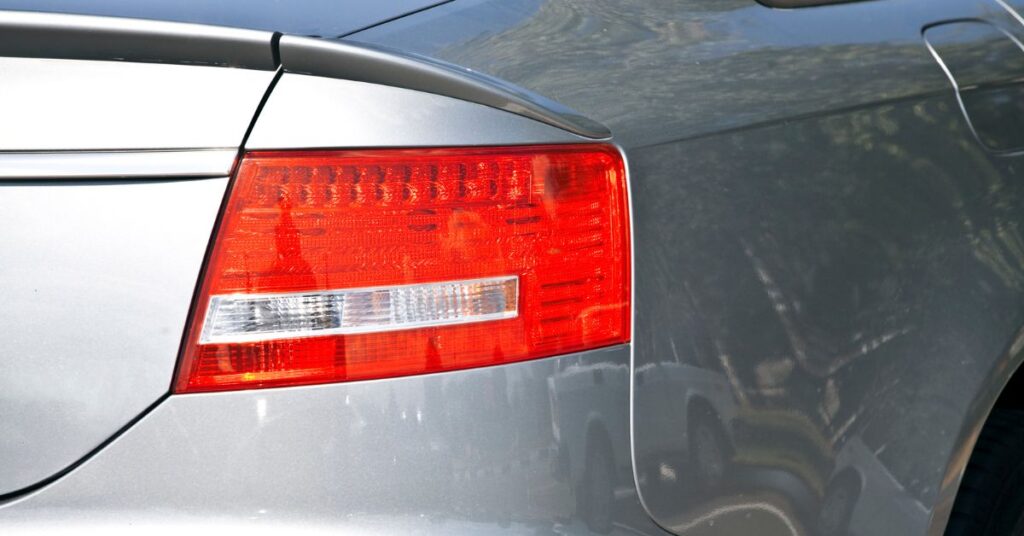
Table of Contents
At some point, you may find yourself behind the wheel, puzzled by the reflection of your car in a storefront window or another vehicle’s reaction, realizing your brake lights are not working. Driving with bad brake lights is a safety hazard. The good news is that the common reasons brake lights don’t work can easily be fixed.
Appreciating The Significance of Brake Lights
Brake lights are not just a legal requirement but a major safety feature. They communicate with other drivers on the road, significantly preventing rear-end collisions. According to the National Highway Traffic Safety Administration , rear-end collisions account for nearly 30% of all accidents on the road. Ensuring your brake lights are operational is a key step in car safety and maintenance.
Reasons Why Your Brake Lights Don’t Work and How To Fix Them
Various issues, ranging from simple to complex, can lead to brake light malfunctions. Understanding these can help you resolve the brake light issues or know when to seek professional help.
Burnt Out Bulb
One of the most common issues you’ll encounter is a burnt-out bulb. Like all light bulbs, those in your brake lights have a finite lifespan. They’ll stop working when they burn out and must be replaced. Replacing a brake light bulb is a manageable DIY task. However, if you prefer professional help, McCullough NAPA Auto Care is local in Sandy Springs, Georgia, and happy to help.
Bad Brake Light Switch
The brake light switch activates the brake lights when you press the pedal. This switch is usually located near the brake pedal. If the brake light switch malfunctions, it disrupts the signal, and your brake lights won’t engage. This problem is a bit more technical and might require the diagnostic skills and tools available at McCullough NAPA Auto Care.
Fuses protect the car’s electrical system to prevent overloads. If your brake lights aren’t working, a blown fuse could be the culprit. While fuses are inexpensive and relatively easy to replace, locating and accessing the correct one might be confusing. Each vehicle model is different. If you feel certain that you know which fuse is blown, replacing the blown fuse on your own is doable. If you’re uncertain, our team will gladly help you.
Sometimes, the issue lies with the socket into which the brake light bulb is inserted. Corrosion, wear and tear, or wiring issues can all impair the socket’s effectiveness. The repair might involve cleaning away the corrosion or replacing the socket entirely. If you’re not confident in your auto repair skills, these are tasks best handled by a professional.
Schedule Service With McCullough NAPA Auto Care
If your brake lights are still not working after troubleshooting, it might be time for a professional inspection. McCullough NAPA Auto Care in Sandy Springs has been a family-owned auto repair shop since 1969. Our technicians are all ASE-certified and ready to help when you need it. We offer scheduled preventative maintenance plans to help ensure your vehicle remains healthy for a very long time.
Contact our team today to get started.
FAQ About Why Brake Lights Aren't Working
Several issues can lead to brake lights malfunctioning, including burnt-out bulbs, a bad brake light switch, blown fuses, and faulty sockets. Wiring problems or issues within the brake light circuit can also be culprits.
Brake lights and tail lights are separate systems. If only the brake lights aren’t working, it’s likely due to a problem specific to them, such as a faulty brake light switch or a burnt-out bulb. The tail lights can still function correctly even if the brake lights are out.
The fix depends on the issue. Simple solutions can include replacing a burnt-out bulb or checking and replacing a blown fuse. Consulting a professional like McCullough NAPA Auto Care is recommended for more complex issues like a faulty brake light switch or wiring problems.
If both tail lights aren’t working, potential causes can be blown fuses, burnt-out bulbs, wiring issues, or a malfunctioning switch. It’s essential to troubleshoot each potential cause systematically to pinpoint the issue.
Signs of a bad brake light switch can include brake lights that stay on at all times, don’t come on at all, or only work intermittently. Other symptoms might include issues with the gear shifter or the cruise control not working properly.

New Location 8155 Roswell Rd. Sandy Springs, GA, 30350
Mon – Fri: 7AM – 6PM Saturday & Sunday: Closed
- Why is my Cruise Control not Working? [14 reasons]
14 Reasons Why your Cruise Control may NOT Be Working
The reason for your cruise control not working could be as simple as a blown fuse to really complex electrical problems. Defective switches, sensors, and even “check engine” light, all could contribute to this problem.
If you like to travel and own a car fitted with cruise control, you know how comfortable it can be to maintain a constant speed! When a cruise control system gets damaged, it is just as annoying as it is dangerous.
Cruise control is connected to several components of the car, and when it fails it can mean that something could be wrong with the CC itself. It could also be a signal that something wrong is happening with any other component of the car.
Why is my cruise control not working?
In this article, I am going to show you the main reasons why your cruise control may not be working (from the simplest to the more complex ones):
Reason #1. Bad or blown fuse
The cruise control’s circuit (like many other electronic components of your car), is protected by a fuse that will blow to protect the system from short circuits and overloads. If your vehicle’s cruise control fuse is blown, the system will stop working.
You can replace the fuse with a new one of the correct amperage, according to your vehicle’s owner manual. If the new fuse doesn’t blow again, everything will be ok; if the fuse blows again, you have to keep searching for what is making that fuse blow.
Reason #2. Burnt brake lamp
Some cruise control systems are disabled when the brake lamp is blown. Check your brake lights. If you find a burnt brake light, just replace it and test the system again.
Reason #3. Defective brake light switch
A defective pedal switch can also make your cruise control stop working. Remember that all cruise control systems are automatically disengaged as soon as the brake pedal is pressed down.
If the cruise control didn’t stop working when a fault in the brake light or brake pedal switch is detected, it could be dangerous; that’s why the CC control unit constantly monitors the status of this switch.
Reason #4. Clutch pedal switch deactivation (for manual transmission vehicles)
Cruise control is deactivated when the clutch is pressed by the driver in manual transmission cars. The CC control unit monitors this switch as it does the brake light switch.
Reason #5. The vehicle speed sensor is not working
A vehicle’s cruise control needs to be able to determine the vehicle’s actual speed. This enables the system to determine how much throttle needs to be applied in order to keep a certain speed, among other things.
The speedometer speed sensor is not always the sensor used by cruise control. Some systems rely on the ABS speed sensors, others do an average and some have a dedicated speed sensor.
If the system can’t detect the vehicle’s speed or detects a problem with the speed sensor, it will stop working.
Reason #6. Faulty throttle body or accelerator pedal
In modern engines, the throttle body is driven electronically by the engine control unit (ECU), and the accelerator pedal works like a potentiometer. The processor managing the cruise control system will act as the accelerator pedal, sending more or less voltage to the throttle body to open or close the throttle body’s butterfly valve.
If there is a problem with your vehicle’s throttle body, your cruise control won’t work.
Reason #7. Check Engine light is “ON”
If your vehicle instrument panel has the “Check Engine Light” ON and the fault stored in the ECU’s memory is related to some component vital for the cruise control system, you will not be able to use your cruise control until you have fixed that problem.
Reason #8. Faulty steering wheel’s spiral cable/clock spring
The spiral cable connects all the switches from the steering wheel (in case your steering wheel has switches) to their respective modules. This includes the connection of the driver’s airbag.
These wires (also called clock springs) are prone to get cut. A faulty spiral cable may have an open circuit making it unable to reach the vehicle’s cruise control module (CCM).
Reason #9. Bad Cruise Control Switch
Your vehicle’s cruise control switches have internal contacts that wear out. If that happens, the switches won’t be able to contact the CCM.
Depending on which buttons are faulty, your whole cruise control can stop working or just some functions won’t work.
Reason #10. Electrical problems with different modules and wiring
Modern cruise control systems use electrical and electronic components, and they are connected to other modules and systems of the vehicle. Some of these systems are the ECU, ABS, and/or Stability Control Systems like ESP.
The CCM makes a check of these systems once the key is switched to ON, and if some of these components are not working in optimal conditions, the CCM won’t engage. If none of the above items seem to be the problem, the vehicle needs to be taken to a professional who can perform a full scan of all the components, check that all the voltages, wiring harnesses, and connectors are ok.
The professional is going to detect if there are any connection problems between modules and will be able to find the reason why the cruise control is not working.
Reason #11. Dirty or faulty camera or sensor (only for vehicles fitted with adaptive cruise controls)
Newer vehicles have adaptive cruise control systems. These devices not only keep a fixed speed by the driver; they also can detect other vehicles ahead and behind and are able to keep a safe fixed distance to avoid collisions.
Some of these new systems have laser sensors while others have cameras to calculate the right distance to follow considering the vehicle’s speed and acceleration. Any problem with the sensors will prevent adaptive cruise control from working.
Problems with older cruise control systems
Before electronic injection and electronic throttle bodies, some cars had the cruise control function. In fact, the first cruise controls were introduced in the early 1950s.
These electromechanical cruise controls are pretty simple. They have a vacuum actuator connected to the throttle linkage that opens and closes the throttle to maintain the vehicle’s speed.
In early injection cars, the throttle linkage was replaced by a cable. Some common faults of these old cruise control systems are:
- A faulty vacuum actuator. Vacuum actuators have a diaphragm inside that can break. Any vacuum leak will lead to failure.
- Faulty vacuum control solenoid. It can prevent the actuator from operating normally.
- Broken throttle cable. If the throttle cable or linkage is broken, it needs to be replaced.
I hope you enjoyed my guide to cruise control problems. Even though it doesn’t explain how to fix your cruise control, it gives you an idea of where to start looking if you are going to do it yourself.
Now you will have an idea about how the system works and what are the possible reasons why it’s failing (in case you have to take your vehicle to a shop to be repaired).
Attention! This article is for informational purposes ONLY and is NOT a replacement for professional advice! ALWAYS consult your local specialist for an appropriate solution to your problem. All statements, prices, contact information, recommendations, and reviews contained herein came from sources that we believe to be reliable, but the accuracy or completeness thereof is not guaranteed. Please contact the service provider for complete details and updates.
I always Know and admit that even though I went to school for ABR grad. In 1994 3.36gpa still have go go back to school for upgrades due to vehicle advancement but I still learned alot although I am dealing with an 05 f150 stx which has more recalls then a auto parts store where the employees don’t know a inerta. Switch from an ignition switch ,thanks for the information
Leave a Reply Cancel reply
Your email address will not be published. Required fields are marked *
Save my name, email, and website in this browser for the next time I comment.
Privacy Overview
Automated page speed optimizations for fast site performance

Cruise Control not Working (Diagnosis and Troubleshooting)
What makes cruise control not work.
Bad brake pedal/light switch — This means communication between you, cruise control and the car is interrupted, and you can’t have immediate manual control of the car.
Bad fuse — Fuses blow to protect the electrical system. Cruise control fuses will do the same, to protect the system and circuits in your car the fuse will break and then need repairing.
Failing speed sensor — Speed sensors are important in cruise control because your car needs to remain at the same speed consistently. Broken speed sensors will affect more than cruise control and need to be serviced urgently
Bad actuator vacuum, hose, or cable –The actuator vacuum is what connects and activates the throttle control. The fault may be with the hoses in the vacuum actuator or the cable linking the system together.
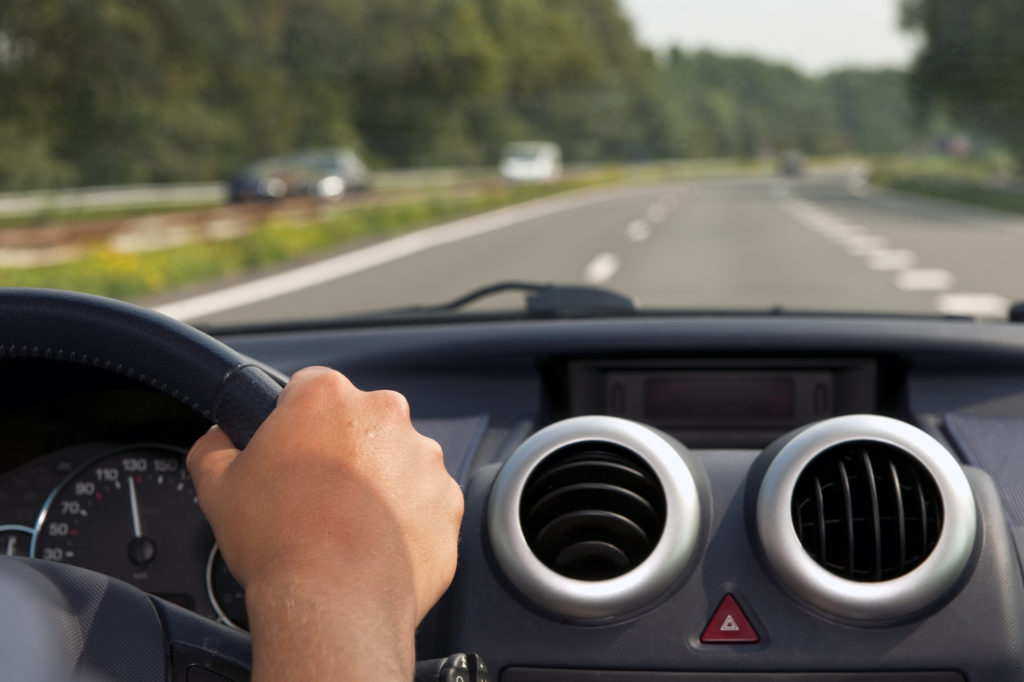
Symptoms of bad cruise control switch
- Symptom 1 — brake pedal does not disengage cruise control
There’s a switch fixed to the bases of the brake pedal and if cruise control does not deactivate when braking then it’s a sign that this switch is faulty.
- Symptom 2 — Hissing noises are heard from under the dash.
The cruise control switch is a vacuum system and for some vehicles, it is mounted near the brake pedals under the dash. If you can hear hissing, it could indicate that the switch or one of the switch’s vacuum hoses is broken.
- Symptom 3 — The cruise control switch/button itself does not work
When trying to turn on the function or while cruising it turns off, this is an indicator of a faulty switch and can be related to wiring issues or the above (1-2) symptoms
- Symptom 4 — A blown fuse
A blown fuse could be a simple error and fix. The switch circuit or fuse may just need to be replaced for the problem to resolve.
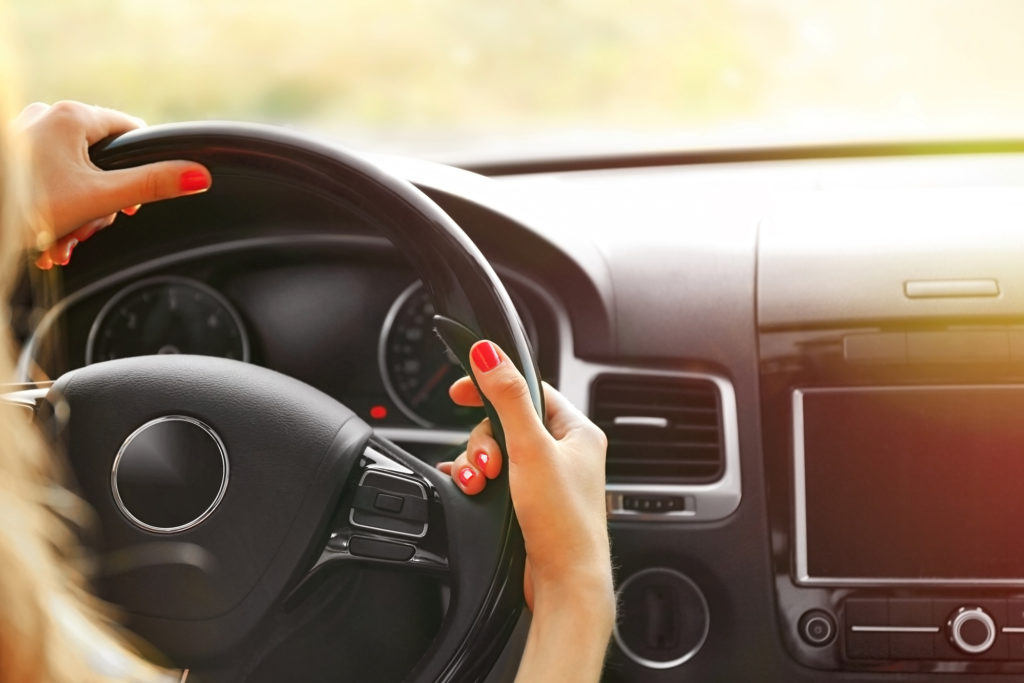
Possible Cruise control failure Scenarios
1. Cruise control not working after battery change
- Possible cause — This differs from vehicle to vehicle and among brands. Some drivers’ cruise control malfunctions after jump-starting their battery, and this is because the battery is still discharged. Newer cars have many electronic systems, and most are powered by the battery. So, if the battery is discharged or low-powered, the electrical cruise control system can be affected.
- Solution — Putting your battery on a trickle charger (2-5 amp) for 12 hours or driving on cruise for a couple of hours may resolve this issue.
2. Cruise control turns off while driving
- Possible cause — Damaged speed sensor or actuator, these two could be internally malfunctioning and causing the cruise control to disengage without input from you.
- Solution — Have a technician or mechanic run a diagnostic with the speed sensor and check the actuator hoses and cables.
3. Cruise control works intermittently
- Possible cause — this may relate to the brake pedal switch. If cruise control is intermittently disengaging, it could be a wiring issue with the switch.
- Solution — Have the brake pedal to cruise control switch investigated by a mechanic or technician and determine if there is a faulty wire to blame. You may need to have the switch or some of its parts replaced.
4. Cruise control turns on but will not set
- Possible cause — The brake pedal switch may be the issue. The brake pedal deactivates cruise control and if it is stuck in the open position, it may cause the cruise control to not engage or set properly.
- Solution — Ask your mechanic or technician to check for this issue specifically in their diagnostic and service.
5. Cruise control turns on by itself
- Possible cause — There may be a failure with the Electronic Control Module (ECM) which manages the actuators or Electronic Control Unit (ECU) which controls the speed in your cruise control
- Solution — You could attempt to reprogram the ECU and ECM if you have the computer tools, otherwise take it into a trusted mechanic or technician.
There are many helpful forums run by mechanics and amateurs: These are always great for solving those specific problems you might experience.
When CC does not set: https://mechanics.stackexchange.com/questions/34795/cruise-control-will-not-turn-on-cannot-be-enabled-nor-set
When CC is faulty after battery change: https://www.vwvortex.com/threads/help-cruise-control-not-working-after-dead-battery.4464553/
For cruise control and other general repairs, watch this channel: https://www.youtube.com/channel/UCf2f4MeZzSksVMe1z3Lp3hw
Can cruise control cause check engine light?
When the check engine light or MIL (Malfunction Indicator Light) is on, the cruise control light may blink to signal that cruise control has been disabled. This is a safety control as the vehicle is programmed to not go on ‘autopilot’ should the engine or mechanical issue relate to the cruise control systems. If the error or fault is with the cruise control systems, then the MIL may be lit for that as well.
How much does it cost to fix cruise control malfunctions?
- For switch repair (parts and labour) it’s estimated at $125- $350
- For fuse repairs, it could be up to $10 to buy the fuse and replace it yourself in a few minutes — there are many helpful YouTube tutorials on simple car repairs like this one.
- For actuator repairs, some cost more than $700
- Therefore, it’s important to know WHAT the issue is to get an idea of HOW MUCH it will cost you.
Does cruise control malfunction trigger the check engine light?
The function of a check engine light or MIL (Malfunction Indicator Light) is to communicate engine or mechanical failures in your vehicle to prevent an accident on the road. The MIL can be lit for simple reasons like the gas cap is loose. Should your CC system fail or run incorrectly, the MIL could light up. Often when there are other failures or engine faults, the MIL will light and the cruise control with a flicker to signal it has been disabled for safety reasons. Once the cruise control or other issues are fixed, all the lights should go back to being turned off.

Author: Dave Johnston
Related articles.
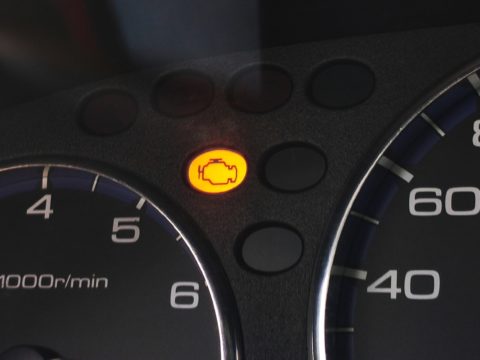
Leave a Reply Cancel reply
Your email address will not be published. Required fields are marked *
Save my name, email, and website in this browser for the next time I comment.
Recent Posts

MyCarMakesNoise.com
Copyright © 2024 My Car Makes Noise
Fixing Faulty Cruise Control
Alarmingly, the speedometer needle steadily winds down from 75 mph toward 50. Just as you uncurl your feet and try to accelerate back to traffic speeds, the vehicle downshifts with a lurch and abruptly climbs back to over 80 mph. So you tap the brakes and disengage the cruise control to avoid a conversation with one of the many law enforcement officers lurking behind every other billboard. Toggling the Resume switch settles things down, holding to a legal speed on both the uphill and downhill sections of the interstate. The kids in the back seat have stopped threatening to throw up, too. Then you look in your mirror 20 miles later and see the lights. Red and blue flashing lights. You're doing over 85 mph and, odds are, Smokey isn't going to believe you have the cruise set to 70. Time to find out why your cruise control has a mind of its own.
IT'S NOT A BUG, IT'S A FEATURE Does your cruise control fall out of engagement partway up steep hills? Actually, it will normally drop out if the engine has to work too hard, mainly because after a while there isn't enough vacuum left to pull in the servo after sustained near-wide-open-throttle. You'll just have to put your foot into it. Downshifting helps.
Does your Japanese car not remember the set speed after tollbooths? Unlike most American and European cars, some Toyotas and Hondas are designed not to remember their set speed if the vehicle speed falls below 25 mph, and you're supposed to accelerate the vehicle to your set speed and hit the Set button again. Annoying, but that's the way they were designed.
Do you have to ride the brakes on longer downhills to keep from building up excess speed? That's normal too. The cruise control only has authority to reduce engine speed to idle. It doesn't activate the brakes. Modern cars, in an attempt to improve mileage, have very tall gear ratios, low-friction engine designs, low-rolling-resistance tires and optimized aerodynamics. That long downgrade outside of town may have accelerated your '60s-era Pontiac to only a couple of miles per hour above legal. But, it may well propel your new economy car to blatantly illegal velocities unless you intervene by braking or downshifting.

WHAT'S THAT HISS?: Most common cause of erratic cruise control? Vacuum leaks caused by deteriorated hoses.
SMOOTH AND STEADY Cruise control on your vehicle is a terrific device. It substantially reduces the driver's workload on longer trips, and can save substantial amounts of fuel and expense over the life of the vehicle--until it stops working.
We'll get to the scenario of not holding a steady speed later, but here are a couple of things to check immediately if the cruise control is on strike.
Does the Cruise icon on the dash light up when you turn the switch on? Duh. Check the fuse. You may need to look in the owner's manual to see which one if it's not tagged on the fuse box cover. An aftermarket cruise may have an inline fuse holder in the wiring to the controller.
If there is power to the system, the next check is the brake lights. Brake lights? Yup, cruise controls have a switch to toggle them off when you touch the brake pedal, and many use the same switch as the brake lights. If one of the brake lights has failed, the cruise control thinks the brakes are on all the time and won't come on. Same result if the switch is incorrectly adjusted or broken or jammed. Wait, there's more--if your vehicle has a manual transmission, there's a similar switch on the clutch pedal. You may need to break out a test light or multimeter to verify the function of this array of switches. These switches usually are normally closed switches, and close their contacts when the pedal is depressed. We've seen several cases of intermittent cruise control dropout caused by a brake light switch that was adjusted very tight. Any small bump would jiggle the brake pedal down far enough to toggle the brake lights on for a brief instant--long enough to shut down the cruise. Adjusting the switch to specs (usually so the brake lights come on after the pedal travels 1/2 in.) fixed it.
Once you verify all of these things, it's time to look for more subtle causes. Check underhood. Inspect the linkage between the cruise control actuator and the throttle. It may be as simple as a toilet-tank bead chain or a separate throttle cable with its own actuator cam to the throttle body. Look for disconnected or damaged wiring to the controller or actuator, particu-larly if it's an aftermarket system, which may have been installed by someone with poor mechanical skills.
Another obvious failure point is the vacuum line to the actuator. If it has fallen off, there's no vacuum to the actuator and no force can be applied to the throttle. We'll get ahead of ourselves here and mention that a vacuum line that looks fine may have a subtle leak caused by aging, brittle rubber or connections that don't seal well. A lot of the cruise controls we've seen with issues in regulating their speed correctly are fixed by simply replacing all the vacuum lines between the servo, vacuum reservoir (if there is one) and the intake manifold vacuum supply.
WHOA, NELLIE!: If your brake light switch is incorrectly adjusted, your cruise control may not lock in. A burned-out brake light can do the same.
WHAT'S THIS THING?: The cruise control servo motor could be anywhere in the engine compartment.
CONTROL ISSUE WITH YOUR SERVO There are two main components of the cruise control system: the controller and the servo.
The controller integrates all the inputs and tells the servo how far to actuate the throttle plates. Normally, there is no way you can service this item, so if you trace a problem to the controller, you'll have to buy a new one. A bad controller probably will require a service manual for specific diagnostics. You'll also need a scan tool to access any computer trouble codes to boot.
The servo does the work of moving the throttle blades to speed up the vehicle. Conventional systems are actuated by manifold vacuum. Check the linkage from the servo to the throttle to ensure it's properly hooked up and not binding or sticky. Inside the servo is a diaphragm that moves to pull on the linkage. Some older systems, used on cars or trucks that don't have throttle-position sensors, may have a rod that moves in and out of a magnetic coil to tell the controller the throttle position. There are also two electrically operated solenoid valves. One valve admits vacuum to the diaphragm chamber to add more throttle. The other bleeds air back into the chamber to reduce throttle. Normally, they will never be open at the same time, so if one is sticky or leaking, cruise control operation will be erratic at best. Check for leakage with a handheld vacuum pump. A leaky valve may benefit from a quick shot of silicone spray.
Diesels and some late models may use a servo that is completely electrical. These usually are mounted on the fenderwell or firewall, and are connected to the throttle by a second throttle cable. Other than keeping the cable lubricated and properly adjusted, there's not much to fiddle with. As always, check the shop manual for specifics on your vehicle.
Many late-model cars have throttle plates connected directly to an actuator controlled by the engine management computer. There is no physical connection between your right foot and the throttle blades (Scary, eh?), and there may or may not be a separate cruise control servo or controller.
HOW FAST WAS I GOING, OFFICER? If you still have no engagement, there may be an issue with the cruise control's speed input. Modern cars use information from the ABS's vehicle speed sensor (VSS) because the engine-management computer needs to know road speed. If your Check Engine light is on, the cruise may not work, especially if the VSS is malfunctioning. Older vehicles may use speed information from the speedometer. Aftermarket systems may resort to a ring of magnets clamped to a driveshaft or axle shaft, with a magnetic coil positioned nearby. If the magnets have fallen off or the coil has been smashed by a rock or road debris, there's no speed data for the controller.
URBAN LEGEND The legend has been related to us by all manner of people, including a couple of state police officers. Using the cruise control in rainy or slick conditions will make your car speed up uncontrollably, until you lose control and crash. It's a myth. Engaging the cruise will not make the car speed up. The cruise will attempt to maintain a steady speed. If the wheels lose traction and the car starts to slow down, the cruise will speed up the engine to attempt to accelerate back to the set speed. This will make the drivewheels spin more briskly. The vehicle speed will go slower, regardless of how furiously the wheels spin. If you have a rear-wheel-drive car, the effect is to destabilize the vehicle, and you probably will spin out unless the vehicle regains traction in a reasonable length of time. A front-wheel-drive car with spinning tires will attempt to continue in a more or less straight line--which will make steering control dodgy at best.
Heavy rain or snow makes use of the cruise control inadvisable, but such conditions certainly won't make your car accelerate to ludicrous speeds while you hang on for dear life. If the cruise is engaged and you perceive a loss of traction, the best bet is to tap the brake to disengage the system, and then add just enough throttle to maintain steering until the vehicle slows down to a more appropriate speed.
WHERE'S THIS THING?: Speed sensor may be buried under the dash near speedo head.
SUCK IT UP: The vacuum reservoir provides an added source of vacuum for those long uphill grades.

.css-cuqpxl:before{padding-right:0.3125rem;content:'//';display:inline;} Cars .css-xtujxj:before{padding-left:0.3125rem;content:'//';display:inline;}
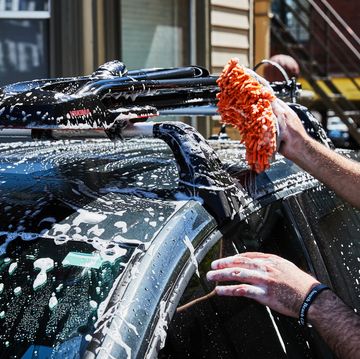
The Best Car Tools to Keep Up With Maintenance

How to Replace Your Car’s Brakes

How to Change Your Oil And Filter

The Best Carports for Weather Protection

The 40 Best Car Toys for Kids in 2024

The 6 Best Car Trash Cans for Collecting Debris

The 5 Best Cordless Power Washers

The 2024 Nissan Rogue Is Making Its Great Escape

Future Cars Worth Waiting For: 2024–2028

10 of the Greatest Corvettes of All Time

The 8 Best USB Car Chargers for a Full Battery

- Broken Down?
- Car Breakdown Cover
- Electric Car Breakdown Cover
- Van Breakdown Cover
- Motorcycle Breakdown Cover
- Classic Car Breakdown Cover
- Personal Breakdown Cover
- Short Term European Breakdown Cover
- Misfuel Cover
- Business Breakdown Cover
- Motoring Advice
- Vehicle Recovery
- Mobile Apps
- Corporate Social Responsibility
- Which? Recommended Provider
- 5 Star Defaqto Breakdown Cover
- Award Winning Breakdown Cover
- Frequently Asked Questions
- Travel Insurance
- Bicycle Insurance
- Home Insurance
- Motorbike Insurance
- Car Insurance
- Alloy Wheel Insurance
- GAP Insurance
- Pet Insurance
- Latest Stories
- Customer Lounge
- Business Lounge
- Looking for Business Cover?

- Breakdown Cover
- Car Servicing and Repairs
10 potential reasons why your cruise control is not working
What is cruise control.
Cruise control is a way of maintaining a selected constant speed without needing to use the accelerator pedal. It is closely integrated with the traction control and braking systems.
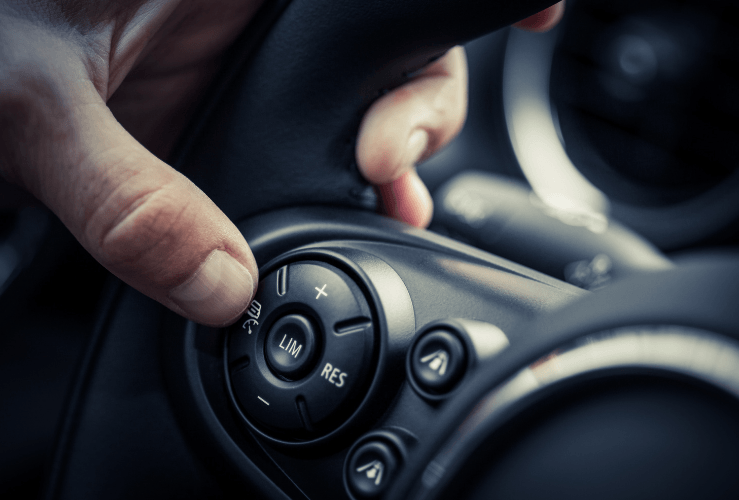
How do I know if my cruise control is not working?
Cruise control systems have become steadily more complex over time. This means it's not always easy to pinpoint why a cruise control system is not working - especially in newer models.
What happens if my cruise control stops working?
While cruise control can make long journeys easier and less stressful, if the system fails it can be dangerous. For example, it may not be possible to cancel a faulty cruise control system - which could have dire consequences. So if your cruise control only works sometimes, or not at all, avoid using it until you can find a solution - by taking it to a trusted mechanic. Alternatively, you may decide to research the issue and attempt to fix it yourself. However, the safest option is to take it to a garage.
Note: You should always check your vehicle handbook for any fault remedy before carrying out any work on your vehicle. If you are unsure of what is required to fix any problems, please consult a professional.
In this article we'll look at 10 of the most common reasons for a malfunctioning cruise control system.
How do cruise control systems work?
Before we begin, it's important to understand how cruise control systems work.
You must first activate the system by pressing the cruise control 'on' button - normally located by the steering wheel. However, this does not activate the system by itself.
Once you've set the cruising speed, the cruise control module (CCM) notes the present speed, then takes over the throttle body to maintain the speed of the car.
As the vehicle’s speed increases or decreases (due to inclines, for example), the CCM makes adjustments to the throttle body opening.
The desired cruising speed is maintained by modulating the engine speed. This speed can be adjusted, or cruise control can be cancelled by pressing 'cancel' or 'off'. The system is also cancelled if the driver applies the brakes.
Paying attention on the road
Cruise control systems are available with varying levels of complexity.
Aside from basic cruise control systems, ‘adaptive cruise control systems’ are often fitted with radar for maintaining safe distances between vehicles behind and ahead. Some even control engine speed in response to nearby vehicles.
Whichever cruise control system your car has, it's critical you still pay attention to other road users in order to avoid collisions. Cruise control should not be considered a fully ‘autonomous’ driving system.
Electronic throttle control systems (ETCS)
With electronic throttle control systems, cruise control is integrated with the engine control module (ECM). These are also known as 'drive-by-wire' systems because of their semi-autonomous nature.
Note that ETCS system failures may require the attention of a trained mechanic.
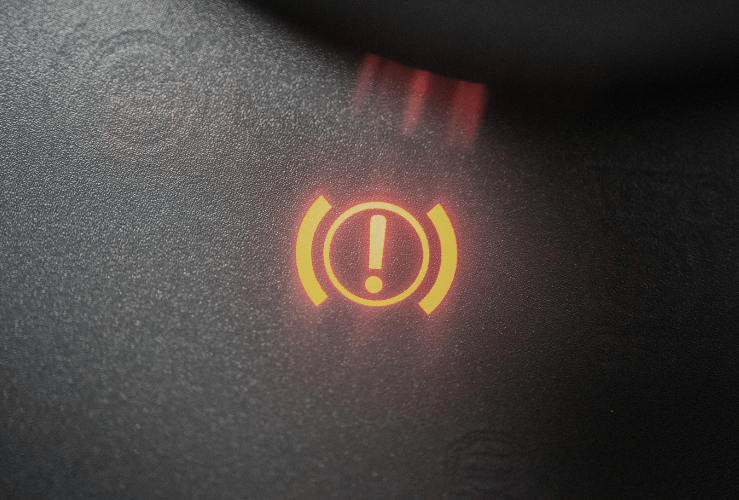
What are the top reasons for cruise control failure?
Brake light switch fault.
Cruise control systems will not activate if they cannot detect a working brake light switch. This is because cruise control systems automatically cancelled once the brakes are applied.
How do you repair a break light switch fault?
If you have some understanding of car mechanics, you may be able to examine the brake light switch, which is located below the steering wheel. However, because such systems have multiple wires, it can be difficult to identify any fault.
You may decide to invest in a multi-application service tool/OBD scanner, which can plug directly into your engine’s computer and pinpoint any fault with your brake light switch.
However, rather than spend money on an OBD scanner and learn how to use it, many people simply replace the brake light switch. Many aftermarket brake light switch replacements are available.
Cruise control switch function: worn out
It's possible for a cruise control switch to wear out over time by being pressed too much or too hard. It may also get damaged by drink spillages or by solvent used when cleaning the steering wheel.
This could mean the CCM cannot be communicated with, potentially disabling cruise control entirely.
How do you check if the cruise control switch function has worn out?
You may be able to confirm this is the issue with an OBD scanner. However, you can check this by looking to see if the cruise control light appears on the dashboard when the switch is operated.
Brake light issues
Some cruise control systems will not activate if they detect a blown brake light. Some aftermarket LED lights draw less current than factory-new lights, which can make the cruise control think a light has been blown.
Spiral cable fault
The spiral cable connects electrical circuits in the steering column to elements in the steering wheel - such as the cruise control activation button. If the spiral cable has an open circuit, the switch may be unable to communicate with the CCM.
Check engine light
Engine or transmission problems may automatically lead to the disabling of cruise control - especially if it's of the ETCS type.
Fuses and relays
The cruise control actuator circuit may be protected by fuses or relays. If these are blown or damaged, the cruise control system may not activate.
Vacuum leak
On some older cars vacuum actuators are used to manage the throttle body when cruise control is activated. A cracked tub or shoe could result in a leak, preventing the system from working. It might also make the engine idle higher.
Vehicle speed sensor fault
The modern car often has multiple speed sensors. If the ECM speed sensor signal used by the CCM is lost, cruise control will not work.
ABS sensor faults
If any of the ABS sensors are faulty (there is normally one on each wheel), the cruise control system will not activate.
Electrical problems
Electrical components are integral to cruise control systems, and should therefore be thoroughly checked in the event of a fault. Issues with source voltage, connectors and wiring harness could disable the system.
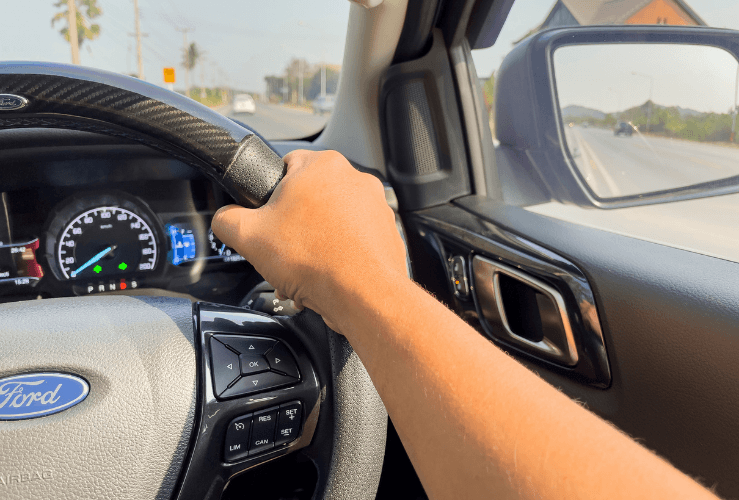
Credit: xzotica65 - stock.adobe.com
Ford cruise control not working?
If the cruise control system on your Ford is not working, the most likely culprits are still those listed above. However, experienced Ford mechanic “ Build It Make It ” on YouTube argues that burned out brake lights are the most common reasons for cruise control failure - especially on models such as the Ford F150.
The next most common reason for faulty Ford cruise control is a blown fuse . Fuses can be checked with a multimeter if you have the required experience, and then replaced.
Build It Make It then lists a broken brake light switch as being the next most common reason. A faulty shifter actuator is listed as the next most common fault cause. This is a lock to ensure you’re not gear shifting when you don’t have the brake engaged. Since the car cannot detect which gear you’re in, it will deactivate the cruise control as a safety measure.
And the fifth most common reason for Ford cruise control not working is faulty control switches . Unless you have extensive automotive mechanical experience, it may be best to have your control switches replaced by a trained Ford mechanic.
More possible Ford cruise control fault reasons
Auto Repair Guys on YouTube list the following as common reasons for Ford cruise control not working:
- Faulty cruise control fuse (often located under glove box) Note: newer Fords may not have fuses for cruise control
- Faulty control switches
- Faulty brake light switch (sometimes integrated with the cruise control switch)
- Faulty ‘cork spring’ or ‘spiral cable’ - as mentioned this connects the steering wheel controls to the car’s computer.
- Motoring Developments and The Future
- Fuel Types and the Environment
- Safety and Security
- Weather and Seasons
- Breakdown Advice
- Driving In Europe
- Tips on Choosing Breakdown Cover
- Motoring Costs
- In-Car Games
- Motorcycling Advice
- What are the signs your clutch needs replacing?
- What is An Air-Con Bomb and How Do You Use One?
- When and How to Check Your Car Brakes
- Car servicing: Is using a dealership worth it?
- What is ABS? The Anti-lock Braking System Explained
- Car rust: How to repair and prevent it – Complete guide
- Catalytic Converters: What Does a Catalytic Converter Do?
- How much does it cost to replace brake pads?
- Car coolant leaks: What are the signs?
- What is an ECU?
- Regassing your car's air-con: Complete guide
- Top reasons your engine management light is on
- Drink Drive Limits: All You Need to Know
- When should you replace your car shock absorbers?
- Car leaking fuel: Common causes and fixes
- Broken coil spring symptoms: Can I still drive my car?
- How to prevent voiding your car’s warranty
- Car oil leaks: Why they happen and how to fix them
- How far can you drive an overheating car?
- Where do you put antifreeze in your car?
- Low car oil symptoms not to ignore
- Car air conditioning: tips and tricks for super-cool AC
- What do I do if my car is juddering?
- How to Reset your Engine Management Light / Check Engine Light
- Car engine oil check: How to do It and when
- How to repair the roof of a convertible car
- Can you tint front windows? How to do window tinting legally
- Tyre bulges: The dangers they pose - and how to fix them
- 10 signs your gearbox is failing
- How to choose a towbar?
- How to repair a paint scratch yourself
- How to change car bulbs: Headlights, indicators and brake lights
- Should I repair or sell my old car?
- I've put the wrong fuel in my car: what should I do?
- How to use a car tyre puncture repair kit
- How to Fit a Tow Bar
- Car tyre size explained
- How to change a car battery
- Car parts: Buy from an authorised dealer or independent garage?
- Is it worth converting a classic car to an EV?
- Common car body shapes: a crash course
- How to check your tyre pressure
- How much oil does my car take?
- Diesel Particulate Filter (DPF) maintenance
- How much is an mot? MOT costs in UK
- Car won't start? Here are common causes and solutions
- Spring cleaning your car
- Head Gasket Guide | Head Gasket Repair UK
- What type of oil does my car need?
- What does brake fluid do and how you can change it yourself
- The signs and dangers of a faulty exhaust
- Blown Turbo Symptoms
- Water is leaking from under my car: What should I do?
- 10 tips for avoiding costly MOT repairs
- Why is my car stalling?
- Timing belt: What does it do? When does it need changing?
- 9 common reasons for failing an MOT
- MOT guide: Common questions answered
- Does breakdown cover include punctures?
- What do Cat C and Cat D mean?
- Keeping your suspension in good shape
- Why does my car smell of petrol?
- How often should you service your car?
- 5 car repairs you shouldn't tackle yourself
- Flooded petrol engine: How to fix it
- How to Fix Your Leaking Sunroof
- My car is stalling: How do I fix it?
- Air conditioning fault: How to fix it yourself
- DIY puncture repairs: a complete guide
- Cloth or leather car seats: Which are right for you?
- How to transfer a private number plate to your car
- How to take care of your clutch
- Car radiator leak – what do you do?
- Paint protection film (PPF) for your car: is it worth it?
- How to install new car front seats: quick guide
- What is a wheel bearing and why is it important?
- Dashboard warning lights: a quick guide
- Why does my car judder when I brake?
- What are run-flat tyres?
- What size engine do I need?
- Damaged windscreen? Here’s why you should fix it promptly
- How much is an MOT test?
- Choosing the right engine oil: A quick guide
- When should you replace your fuel filter?
- Car battery maintenance: How to keep your battery in good condition
- Antifreeze - what it does and which you should use
- What is wheel alignment?
- How to remove the smell of cigarette smoke from your car
- MOT: is your vehicle exempt?
- When to change your car battery
- Does your car need a spring clean?
- How to look after your engine
- How to increase the life of your car
- Potholes: How to avoid damaging your car
- Everything you need to know before buying and changing oil
- The benefits of car servicing
- What causes battery problems in winter?
- Ways to clean your car headlights
- When to change your timing belt
- Keeping a tool box in the car: What to carry
Get a Quote

Quick efficient , friendly service. Great price.
Excellent service. Prompt. Efficient. Fantastic customer service. Kept me updated every step of the way.
Had a problem recently where my car suddenly 'died' and wouldn't start again - fortunately not in a dangerous position. Start Rescue arrived quickly, ...
I've stayed with 'start' for about three years now because I like that customers renewing pay the same as new customers. I also like the wide range of...
Exhaust back box came off my 20 year old Mini cooper about 13 miles from home. Filled in the information on the app & were kept updated brilliantly as...
My daughter broke down recently and used the start rescue app - 7 minutes later (yes seven) a tow truck with a very helpful man arrived and helped her...
I have had to use them twice over the last 5 years unfortunately, but I have found the company from start to finish very professional. Both time I w...
£48 for cover for my car. I had a fault Mon morning peak time in Edinburgh 100 miles from home. Used the app, technician arrived after about 45 mins a...
Our Fiat 500L had not been driven for three months for medical reasons. Even when I succeeded in starting it up, the battery light stayed on. I called...
Amazing service !!!!! 2 times using without problems!!!
We use essential cookies to ensure our site is safe and works properly. We also use analytics cookies to offer you a more personalised experience and to improve our site. To find out more and manage your cookie preferences, please choose ‘Manage’ or view our cookies policy.
Why Is My Cruise Control Not Working? 6 Common Reasons
By: Author Zach Reed
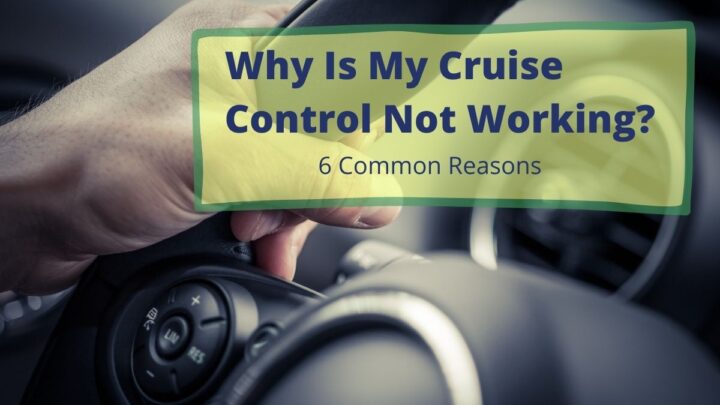
When your cruise control stops working, it can be quite an inconvenience. In this expert guide, we’ll talk about the most common reasons it can fail.
If you’re old enough, you can probably remember driving on road trips , or even just on your daily commute to work, before cruise control was a thing. It can be downright exhausting.
Unfortunately, even modern-day cars can have a failing cruise control system and it can seem like you’ve been thrown back into the stone ages.
Okay, that might be a bit dramatic, but it really can be annoying when cruise control stops working. But why does that happen?
The most common reasons that your cruise control might stop working include a bad cruise control switch, a blown fuse or relay, problems with the engine or transmission, a faulty vehicle speed sensor, a bad brake pedal switch, or a broken cruise control cable.
If your car’s cruise control isn’t working, it can be a major pain.
What do you do if your cruise control stops working? Here are some of the most common reasons why it might not be working, and how to fix it!
To fully understand why cruise control stops working on a car, we researched the most common reasons so that you know exactly what’s wrong with it.
Since we’ve already done the research for you, all you need to do is run through the list of common reasons below and you’ll be able to get your cruise control figured out in no time.
How Does Cruise Control Work?
Before we get into the reasons that cruise control might not be working in your car, it’s important that we first explain how the cruise control system works in the first place.
By understanding how cruise control works and what components are involved, you’ll have a much better understanding of why the issues below can prevent cruise control from working.
So, how does cruise control work?
The cruise control system in your car is made up of a few different parts. There’s a cruise control switch, which is usually located on the steering wheel, that turns the system on and off.
There are also fuses and relays that power the system, and a speed sensor that tells the system how fast the car is going. These sensors report back to the cruise control module, which controls a cruise control servo.
This servo is what actually controls the throttle of your car , and it’s what tells the car to speed up or slow down to maintain the cruise control speed.
Finally, there’s a brake pedal switch that tells the system when you’re braking and a cruise control cable that connects the accelerator pedal to the cruise control system.
All of these parts and pieces work together to enable your car to maintain a set speed without you having to constantly adjust the accelerator.
Now that we know how the cruise control system works, let’s take a look at some of the most common reasons why it might not be working in your car.
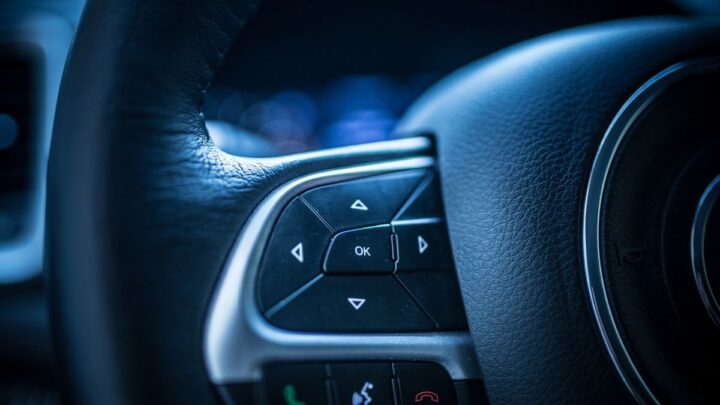
Most Common Reasons That Cruise Control Isn’t Working
1. bad cruise control switch.
One of the first things to check if your cruise control isn’t working is the switch. This is usually located on the steering wheel or stalk. If it’s a bad switch, then it might need to be replaced.
This is usually pretty easy to check because you can just try to turn the system on and see if it engages.
In most cars, a light will illuminate somewhere on your dash (or on the button itself) once you press the switch to turn on cruise control.
So if you hit the button or switch but you don’t see a light illuminate anywhere, it could be an indication that the button or switch itself is bad. But that’s not the only reason you might not see the light turn on.
2. Blown Fuse or Relay
Another pretty common reason that cruise control might not be working is because of a blown fuse or relay.
These are usually located in the fuse box under the hood. If you think this might be the case, then you can just check the fuse box to see if there’s a blown fuse or relay.
If you don’t see a blown fuse or relay, it could still be the problem. Sometimes the fuse or relay might not look blown but could still be bad.
In this case, you might need to use a multimeter to test the fuse or relay to see if it’s still good. Typically, a relay will audibly “click” when it’s activated, so if you don’t hear the clicking noise, the cruise control relay might be bad.
3. Engine or Transmission Problems (Check Engine Light)
If the cruise control system is engaged but the car doesn’t seem to be responding, it could be because of engine or transmission problems.
These types of problems can be pretty serious, so it’s definitely something you’ll want to get checked out by an experienced mechanic or technician. Often, this will be accompanied by your check engine light turning on.
Furthermore, sometimes the cruise control system won’t even engage if there are overarching issues with the engine or transmission that would prevent it from working.
This is more commonly seen in newer cars where the electronics and computer system are so advanced and integrated that it will prevent you from using cruise until you fix the underlying issues.
4. Faulty Vehicle Speed Sensor
One of the most common reasons that cruise control might not be working is because of a faulty vehicle speed sensor. This is the sensor that tells the cruise control system how fast you’re going.
If it’s not working correctly, then the cruise control system won’t be able to maintain the correct speed.
In most cases, a faulty speed sensor will need to be replaced. However, sometimes you can clean the sensor and fix the problem. This is usually pretty easy to do and you can find instructions online or in your car’s owner’s manual.
You usually have to jack your car up and remove the wheel to get to the sensor, so make sure you’re being careful and following the owner’s manual!
5. Bad Brake Pedal Switch
Another common reason for cruise control not working is a bad brake pedal switch. This switch is located on the brake pedal itself and tells the cruise control system when you’re pressing the brakes.
If it’s not working correctly, then the cruise control system won’t know when you’re trying to stop and it could cause some serious accidents .
In most cases, you’ll need to replace the switch if it’s not working correctly. However, if you’re lucky, you might be able to clean it and get it working again.
Sometimes it can even just come unplugged and all you need to do is plug it back in. Either way, this is a pretty easy fix that you should be able to do on your own.
6. Broken Cruise Control Cable
Last up on our list of the most common reasons cruise control might not be working is a broken cruise control cable. This is the cable that runs from the cruise control module to the throttle body.
If it’s broken, then the cruise control system won’t be able to tell how much gas to give the engine and it won’t work correctly.
The vast majority of the time, you need to replace the cruise control cable if it’s broken. However, sometimes it might have just come loose or come off the track at the throttle body and you just need to reattach it correctly.
This cable has to have the correct amount of tension in order to operate properly, so you might want to leave this one up to the professionals if you aren’t confident about it!
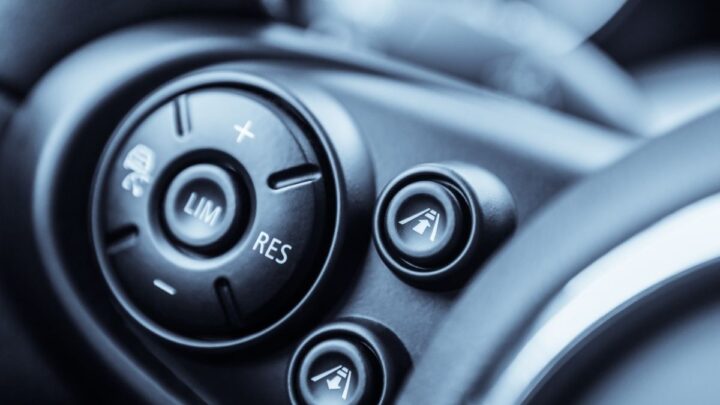
How Hard is it to Fix Cruise Control on Your Car?
Now that you know why your cruise control might not be working, you’re probably wondering if it’s something you can handle on your own. That really depends on what the problem is.
As you can see from the list above, some of the issues are pretty easy to fix, like a blown fuse or bad brake pedal switch, while others are pretty difficult, like engine or transmission problems.
If you’re having trouble with your cruise control, the best thing to do is take it to a qualified mechanic or technician and have them diagnose the problem.
They’ll be able to tell you exactly what’s wrong and how difficult (and expensive) it will be to fix. Most of the issues with cruise control are fairly simple and inexpensive, and the convenience of the feature usually makes the repair worth it!
Conclusion on Common Issues For Cruise Control
There are a few different reasons why cruise control might not be working in your car anymore, including a broken switch, a blown fuse or relay, or faulty speed sensors.
Whatever the problem may be, figuring it out is the first step so you can go back to cruising on the roads without a problem.
We hope this article helped shed some light on why cruise control might not be working in your car.
Be sure to take it to a professional if you’re having any trouble so they can help you get back on the road safely!
Hi, I'm the founder of VehicleAnswers.com! Having owned a wide variety of vehicles in my life, I was astounded at how hard it can be to find answers to common automotive questions. Rather than sit idly, I decided to create this website to help others!

Cruise Control Not Working? 9 Potential Causes
gabrieletamborrelli / Getty Images
- Cars & Motorcycles
- Frugal Living
- Fine Arts & Crafts
- Card Games & Gambling
- Playing Music
Cruise control reduces stress and fatigue on long drives, but if the system isn't working properly, it can become dangerous. If your vehicle's cruise control isn't working, one of the following nine issues may be the root cause.
How Cruise Control Works
Cruise control is a system to maintain vehicle speed without direct driver input. When you want to engage cruise control, you first turn the system “On” with a button or switch. However, this alone does not start the cruise control. When you “Set” cruising speed, the cruise control module (CCM) records the current speed, then takes control of the throttle body to maintain vehicle speed. When vehicle speed increases or decreases (due to wind or hills, for example), the CCM decreases or increases throttle body opening accordingly.
By modulating engine speed, the CCM can maintain your desired cruising speed on the highway. You can increase or decrease cruise speed by tapping a button or lever, and you can cancel cruise control by hitting the “Cancel” or “Off” buttons or stepping on the brake.
Throttle body control has changed over the years. Early systems used a vacuum motor and cable, but these eventually changed over to electric motors. Most recently, with the development of drive-by-wire or electronic throttle control systems (ETCS), cruise control is built into the engine control module (ECM), which controls the throttle body electronically.
Basic cruise control systems still require the driver to pay attention to changing road and traffic conditions. Adaptive cruise control systems, sometimes called "smart" cruise, use radar or laser detection to maintain safe distances from vehicles ahead. Some adaptive cruise control systems merely reduce engine speed to maintain distance, but some of the newest adaptive cruise control systems can also engage the brakes to slow or stop the vehicle. Still, even with adaptive cruise control, it's important that drivers never take their eyes off the road.
Why Is My Cruise Control Not Working?
There are a few basic ways that cruise control can fail, depending on how the system is designed. You may not be able to do much about ETCS cruise control systems, but there are a few things you can check:
Brake Light Switch – As cruise control is automatically cancelled by depressing the brake, some vehicles may disengage cruise control if it cannot detect the brake light switch.
Brake Lights – In some systems, cruise control is disabled when a brake light is blown. Aftermarket lighting, such as LED brake light conversion, might trick the CCM into thinking a brake light is blown, as LED bulbs draw less current than incandescent bulbs.
Fuses and Relays – On some vehicles, fuses and relays are used to protect the cruise control actuator circuit . If the fuse is blown or the relay is faulty, the system won’t work.
Spiral Cable – Many vehicles mount the cruise control switch on the steering wheel. A faulty spiral cable may have an open circuit, preventing the switch from contacting the CCM.
Control Switch – If the internal contacts wear out, the cruise control switch may not be able to contact the CCM. This might disable cruise control completely, or it might not react to the cancel or accelerate functions.
Check Engine Light – On some modern vehicles, particularly those equipped with ETCS, cruise control may be disabled if there is an engine or transmission problem .
Vacuum Leak – Some older vehicles used vacuum actuators to control the throttle body during cruise control operation. If there is a leak, such as a cracked hose or tube, the system won’t work. A vacuum leak might cause the engine to idler higher or set a fuel trim code.
Vehicle Speed Sensor – There are usually multiple vehicle speed sensors (VSS) on any given vehicle. The CCM might use a VSS feed from the ECM, instrument cluster, or transmission. If that signal is lost, the CCM can’t detect vehicle speed, disabling cruise control.
Electrical Problems – As most cruise control systems use electrical or electronic components, any diagnosis should include a thorough check of source voltage, wiring harnesses, and connectors. Anything loose or broken could disable the system entirely.
If your cruise control isn’t working properly, avoid using it until it is repaired. A faulty cruise control system may not cancel on demand, which will create a safety hazard for you and those around you. After assessing your cruise control yourself, take your vehicle to a trusted mechanic for a check or a couple diagnosis and repair.
- How Electronic Throttle Control (ETC) Works
- How the Air Intake System Works
- ABS Brakes and the Facts
- Engine Vacuum Leak: Symptoms and Solutions
- How to Find a Short Circuit
- Troubleshooting Common Condenser Fan Problems
- How to Diagnose a Ford Expedition Transmission Problem
- Why Is My Car Shaking at Idle?
- Diagnosing GM Converter Lock-Up Problems
- 3 Ways to Reset a Check Engine Light
- Car Charging System Check
- What Is a Throttle Body and How Does It Work?
- Why You Can't Read Your OBD-II Codes
- What to Do When Your Car Won't Start or Turn Over
- Why Does the Emergency Brake Light Stay on in My Chevy C1500 Pickup?
- What to Do When Your Tire Pressure Light Is Flashing

Cruise Control Not Working? (11 Reasons Why)

Cruise control is a great feature that some cars have to help you maintain your car’s speed without accelerating. However, cruise control is not perfect, as something can go wrong and keep it from functioning.
When your cruise control is not working, you may be wondering what caused it. I looked up the facts, and here is what I learned!
1. A Blown Fuse
One of the most common reasons why your cruise control stopped working is that you have a fuse blown out.
Generally, all of the electrical systems in your car will be controlled by fuses, which is in charge of protecting the main electrical component.
When there is a fault or short circuit, the fuse is meant to blow to protect the major electrical parts from damage.
However, a blown fuse will also keep the electrical systems like cruise control from working because no electricity will reach them.
2. Bad Speed Sensor
Usually, cruise control is meant to help you maintain your car’s speed without accelerating, so having a bad speed sensor can make your cruise control malfunction.
A speed sensor is responsible for measuring the wheel speed or transaxle or transmission output.
As such, the speeds sensors try to see if the car needs traction control, which is crucial for cruise control.
Normally, your cruise control will not work or even malfunction when the speed sensors are faulty because it cannot accurately measure the car’s speed.
Moreover, you will be able to tell if there is an issue with your speed sensors when your speedometer acts oddly or gives inaccurate readings.
Additionally, issues with the speed sensors will also trigger a check engine light or ABS warning light on your car’s dashboard.
3. Faulty Brake Pedal Switch
Usually, having a faulty brake pedal switch is the main reason why your cruise control would stop working.
Generally, your brake pedal switch is in charge of switching the brake lights on and off depending on the pedal’s position.
Usually, the designs for cruise control systems involve the cruise control disengaging whenever you press on the brake pedal.
So since the brake pedal switch is connected to the cruise control, having a faulty brake pedal switch can make your cruise control stop working.
For instance, your car may think that the brakes were engaged when the brake pedal switch malfunctions, making the cruise control automatically switch off.
Another way to tell that you have a faulty brake pedal switch is when your brake lights turn on and off randomly.
4. Bad Vacuum Actuator Or Cable
If you happen to have an older car that has cruise control, chances are that your cruise control does not work because of a problem with a throttle cable or vacuum actuator.
Normally, having any issue with the actuator will make the cruise control malfunction.
Moreover, the cruise control usually fails when the cable that links the actuator to the car’s throttle has been damaged.
5. Damaged Relay
While not all cars have this, some cars will have relays that protect the circuit of the cruise control actuator.
A relay is a type of electric switch that closes and opens the circuit, which means a relay operates similarly to a switch.
If your car’s cruise control has a relay that is damaged, your cruise control will not work because the relay will not open and close the circuit when you use it.
6. Brake Lights

If you recently blew a brake light, there is a good chance that your cruise control does not work due to a blown brake light.
For some car systems, the cruise control will get disabled when one or multiple brake lights blow.
Normally, this can occur because you have had your brake lights for a long time, so they would have burned out.
However, getting aftermarket lighting like LED brake light conversion could be the cause as well.
For instance, aftermarket lighting may not be completely compatible for your car, so it would trick the central control module into believing there is a blown brake light.
So even if your brake light is not blown, your central control module would think it is and make your cruise control malfunction.
7. Faulty Spiral Cable
For most cars, the cruise control switch is mounted on the steering wheel, which is where you can find a spiral cable.
Occasionally, the spiral cable can be faulty, which creates an open circuit that keeps your cruise control switch from contacting your car’s central control module.
Normally, this can be fixed by having a mechanic replace the spiral cable since you usually cannot repair the spiral cable.
8. Electrical Issues
Generally, cruise control systems in cars are electronic, which means there are various components that work together to make the cruise control system operate.
As such, any problem with the electrical components in the cruise control is a common reason why your cruise control would stop working.
Normally, one of the more common electrical issues that can occur with the cruise control is that you have a faulty connector or wiring harness in your cruise control system.
Next, the next issue that can occur is that your voltage source may not be giving enough power to the cruise control system.
Additionally, the cruise control may not work because it is not being engaged, which normally happens when you have a defective cruise control button or switch.
Ideally, it is best to have a mechanic look for electrical issues with the cruise control to repair any wiring issues.
9. Check Engine Light
If you have a modern car, especially a car with electronic throttle control, your check engine light may be keeping your cruise control from working.
Generally, having a problem with your transmission or engine will disable your car’s cruise control.
Usually, your engine’s control unit will disable the cruise control once it detects an issue with your transmission or engine as a safety precaution.
If you notice that your check engine light goes on, your cruise control light will also blink to alert you that the cruise control was disabled.
In some cases, your car’s dynamic stability control light may also switch on to signal that it has been disabled when the check engine and cruise control lights illuminate.
10. Control Switch
Normally, most cruise control systems turn on and off the cruise control, so having a defective control switch could make your cruise control stop working.
For control switches, there are internal contacts that turn the cruise control on and off whenever you press a button or flip a switch.
When these internal contacts get worn out, your cruise control switch will not be able to contact the central control module.
Therefore, the cruise control system would not react to accelerate or cancel functions, or the cruise control may get disabled altogether.
Typically, this can be fixed by finding a new control switch to replace the worn out contacts on the faulty control switch.
11. Vacuum Leak
As stated earlier, having damage in your actuator or the cables of the actuator can affect your cruise control, and so can a vacuum leak.
There are tubes or hoses in the actuator, and they can occasionally get a leak that can make the cruise control stop working.
Normally, there are other signs that you can watch out for if you have a vacuum leak, such as noticing the engine sets a fuel trim code or your engine idlers higher.
Conclusion
Typically, cruise control will stop working because there is a different issue in your car, such as a transmission or engine problem.
However, having an issue with your brakes or the cruise control system itself can make your cruise control malfunction.
Leave a Comment Cancel reply
Save my name, email, and website in this browser for the next time I comment.
Welcome to Autoily.com! We are a group of passionate car, motorbike, RV, and pickup truck owners. Our aim is to provide concise, easy-to-understand, and useful information on vehicles, maintenance, and components.
© Autoily.com

Cruise Control Not Working? Troubleshoot It Now!
Are you experiencing issues with your cruise control? Don’t worry, we’ve got you covered! Cruise control is a convenient feature that allows you to maintain a constant speed without using the accelerator pedal. However, when it stops working, it can be frustrating and potentially dangerous. In this article, we’ll help you troubleshoot common cruise control problems and provide you with diagnostic tips to get you back on the road in no time.
Key Takeaways
- Understanding how cruise control works is crucial for troubleshooting.
- Common reasons for cruise control failure include faulty brake light switches, worn-out cruise control switches, and electrical problems .
- Ford vehicles may have specific cruise control issues, such as burned-out brake lights or faulty control switches .
- Troubleshooting tips include inspecting the brake light switch, checking for vacuum leaks, and diagnosing electrical problems .
- Fixing cruise control problems may involve replacing faulty components or seeking professional assistance.
How Does Cruise Control Work?
Cruise control systems work by utilizing a combination of components to maintain a set speed in your vehicle. Understanding how cruise control systems function is crucial for diagnosing and troubleshooting any potential issues.
When you activate the cruise control system by pressing the ‘on’ button, it enters into a standby mode, awaiting your instructions to set the desired cruising speed. Once you have reached the desired speed, you can set it by using the control buttons typically located on the steering wheel or stalk.
Now, let’s delve into the inner workings of a cruise control system. Once the cruising speed is set, the cruise control module takes control of the throttle body , which regulates the amount of air entering the engine. By adjusting the throttle body opening, the system maintains the desired speed, compensating for changes in incline and external factors.
During operation, various sensors constantly monitor the vehicle’s speed, throttle position, and other relevant parameters. These sensors provide continuous inputs to the cruise control module, which in turn adjusts the throttle body opening accordingly to maintain the desired speed.
If you need to cancel the cruise control function, you can do so by pressing the ‘cancel’ or ‘off’ button or applying the brakes. These actions deactivate the cruise control module, allowing you to regain control of the throttle and return to normal driving mode.
It’s important to note that cruise control systems are not fully autonomous. They assist the driver in maintaining a constant speed but still require attentive driving and awareness of the road conditions. Cruise control should never be used as a substitute for actively monitoring the road ahead and reacting to unexpected situations.
Now that we have a basic understanding of how cruise control works, let’s explore some common reasons for cruise control failure and learn how to troubleshoot these issues.
Common Reasons for Cruise Control Failure
If your cruise control is not functioning properly, there could be various reasons behind its failure. Understanding these common issues will help you troubleshoot and resolve the problem.
1. Faulty Brake Light Switch
A faulty brake light switch is a common culprit for cruise control failure. When the brake light switch is malfunctioning, it can prevent the cruise control system from engaging or disengaging correctly.
2. Worn-Out Cruise Control Switch Function
Over time, the cruise control switch function can wear out, resulting in the inability to set or maintain the desired cruising speed.
3. Brake Light Issues
Brake light issues , such as a burned-out bulb or wiring problems, can interfere with the proper functioning of the cruise control system.
4. Spiral Cable Fault
A faulty spiral cable, which is responsible for transmitting electrical signals between the steering wheel and the rest of the vehicle, can cause cruise control failure.
5. Check Engine Light
If the check engine light is illuminated, it may indicate underlying issues with the vehicle’s engine or emissions control system, which can affect the cruise control functionality.
6. Blown Fuses and Damaged Relays
Blown fuses or damaged relays in the cruise control circuit can disrupt the flow of electrical power, leading to cruise control failure.
7. Vacuum Leak
A vacuum leak in the engine can cause a loss of vacuum pressure, affecting the cruise control system’s ability to maintain the set speed.
8. Vehicle Speed Sensor Fault
A malfunctioning vehicle speed sensor can prevent the accurate transmission of speed information to the cruise control module, resulting in functionality issues.
9. ABS Sensor Faults
Issues with the anti-lock braking system (ABS) sensors can affect the cruise control system, as these sensors provide essential data for maintaining speed and stability.
10. Electrical Problems
Electrical problems , such as wiring issues, faulty connectors, or a malfunctioning cruise control module, can disrupt the proper functioning of the cruise control system.
Identifying and addressing these common reasons for cruise control failure can help you troubleshoot and resolve any issues you may be experiencing. By addressing these problems, you can ensure the smooth operation of your cruise control system and enjoy a comfortable driving experience.
Ford Cruise Control Not Working?
If you own a Ford vehicle and are experiencing issues with your cruise control, you’re not alone. Ford cruise control can sometimes fail to work altogether or operate intermittently. To help you troubleshoot and resolve these problems, we’ve identified some common issues that may be affecting your Ford’s cruise control system.
Common Issues with Ford Cruise Control
There are several common issues that can cause Ford cruise control to malfunction. These include:
- Burned out brake lights
- Blown fuses
- Broken brake light switch
- Faulty shifter actuator
- Faulty control switches
Addressing these issues is essential to ensure the proper functioning of your Ford’s cruise control system. Let’s take a closer look at each problem and how it can affect your cruise control’s operation.
To diagnose and resolve these issues, refer to your Ford vehicle’s manual or consult a trusted mechanic for proper guidance and repair.
By addressing these common issues, you can potentially restore the functionality of your Ford’s cruise control system and enjoy a comfortable and convenient driving experience.
Troubleshooting Tips for Cruise Control Issues
If your cruise control is not working properly, follow these troubleshooting tips to diagnose and resolve the problem. By going through each step, you can identify the underlying cause and take appropriate action.
1. Check the Brake Light Switch
Start by inspecting the brake light switch, as a malfunctioning switch can affect cruise control functionality. Ensure that the switch is properly connected and functioning correctly. If necessary, replace the switch.
2. Inspect the Cruise Control Switch Function
Verify that the cruise control switch is functioning as intended. Press all buttons and check for any signs of wear or damage. If the switch is faulty, consider replacing it with a new one.
3. Ensure Proper Brake Light Function
Make sure the brake lights are working correctly. Faulty brake lights can interfere with the cruise control system. Test the lights by pressing the brake pedal while observing if they illuminate.
4. Check the Spiral Cable
Inspect the spiral cable, also known as the clock spring , for any signs of damage or wear. The spiral cable connects the steering wheel-mounted controls, including the cruise control buttons, to the vehicle’s electrical system. Replace the spiral cable if necessary.
5. Address Check Engine Light Issues
If the check engine light is illuminated, it may indicate an underlying problem that affects the cruise control system. Use an OBD-II scanner to retrieve any stored error codes and diagnose the issue accordingly.
6. Inspect Fuses and Relays
Check the fuses and relays related to the cruise control system. A blown fuse or damaged relay can prevent the cruise control from engaging. Replace any faulty components as needed.
7. Look for Vacuum Leaks
Inspect the vacuum hoses connected to the cruise control system for any leaks or damage. Ensure proper connections and replace any damaged hoses. Vacuum leaks can interfere with the system’s functionality.
8. Inspect the Vehicle Speed Sensor
Check the vehicle speed sensor for any faults. A malfunctioning speed sensor can prevent the cruise control from maintaining the desired speed. Consider replacing the sensor if necessary.
9. Address ABS Sensor Faults
ABS sensor faults can also impact the cruise control system. Inspect the ABS sensors and wiring for any damage or connectivity issues. Repair or replace any faulty components.
10. Diagnose Electrical Problems
If none of the above steps resolve the issue, it’s essential to diagnose any underlying electrical problems. This may require professional assistance to accurately identify and repair the problem.
By following these troubleshooting tips, you can effectively diagnose and resolve cruise control issues. Remember to prioritize safety and consult a professional if needed.
Tips for Fixing Cruise Control Problems
Once you have identified the cause of the cruise control problem, you can take steps to fix it. Depending on the issue, this may involve:
- Replacing the brake light switch: A malfunctioning brake light switch can prevent the cruise control system from engaging. Replace the switch if necessary.
- Repairing the cruise control switch function: If the cruise control switch is worn out or not functioning properly, it may need to be repaired or replaced.
- Addressing brake light issues: Ensure that the brake lights are working correctly, as cruise control systems often rely on the brake light circuit to engage and disengage.
- Replacing the spiral cable: A faulty spiral cable can cause cruise control issues. If diagnosed as the problem, it should be replaced.
- Resolving check engine light problems: If the check engine light is illuminated, it may indicate an issue that needs to be addressed to restore proper cruise control operation.
- Replacing blown fuses or damaged relays: Check the fuses and relays related to the cruise control system and replace any that are blown or damaged.
- Fixing vacuum leaks: Vacuum leaks can affect the performance of the cruise control system. Identify and repair any leaks found.
- Replacing the vehicle speed sensor: A faulty vehicle speed sensor can prevent the cruise control system from maintaining the desired speed. Replace the sensor if needed.
- Addressing ABS sensor faults: ABS sensor faults can interfere with the cruise control system’s functionality. Troubleshoot and replace any faulty ABS sensors.
- Resolving electrical problems: Cruise control issues can be caused by various electrical problems. Diagnose and fix any electrical faults affecting the system.
It’s crucial to follow proper repair procedures when fixing cruise control problems. If you’re unsure or uncomfortable with these repairs, it’s always advisable to consult a professional automotive technician for assistance.
Paying Attention on the Road
While utilizing cruise control can enhance comfort and reduce stress on long journeys, it’s important to recognize that it is not a fully autonomous driving system. Therefore, it is imperative to maintain vigilance and remain attentive to other road users in order to prevent potential collisions. Cruise control should be regarded as an aid to driving, rather than a complete substitute for active engagement with the road.
Importance of Vigilance
When utilizing cruise control, drivers must remember that it is their responsibility to actively monitor the road conditions and adjust their driving accordingly. While the cruise control system assists in maintaining a constant speed, it does not account for prevailing traffic conditions, road hazards, or unexpected situations that may require immediate driver intervention. By remaining attentive, drivers can effectively respond to unpredictable events, ensuring the safety of themselves and others on the road.
Understanding Cruise Control as an Aid
Cruise control should be viewed as a valuable tool that can enhance driving comfort and alleviate fatigue during long trips. By allowing drivers to maintain a steady speed without continuous foot pedal operation, it can provide relief on monotonous stretches of road. However, it is crucial to remember that cruise control does not relieve the driver of their obligation to actively control the vehicle. It is always necessary to stay focused, maintain situational awareness, and be prepared to take immediate action if required.
Avoiding Complacency
One potential danger of using cruise control is the potential for complacency. Drivers may become overly reliant on the system and mentally disengage from the driving task. To combat this, it is important to stay mentally alert and focused on the road, even when cruise control is active. Regularly scanning the surroundings, checking mirrors, and monitoring traffic conditions are essential habits to maintain, promoting a safe and secure driving experience.
The Role of Driver Responsibility
Drivers must recognize that the safe operation of their vehicle is ultimately their responsibility. While cruise control can assist in maintaining a constant speed, it is the driver’s duty to actively observe and respond to changing road conditions, traffic situations, and unexpected events. Staying engaged, alert, and involved in the driving process is essential to ensuring a safe and enjoyable journey.
By prioritizing attention and active engagement while using cruise control, drivers can maximize the benefits of this feature while ensuring the safety and well-being of everyone on the road.
Electronic Throttle Control Systems (ETCS)
Some vehicles are equipped with electronic throttle control systems, also known as drive-by-wire systems . These advanced systems integrate the cruise control functionality with the engine control module, providing a seamless and efficient driving experience.
ETCS allows for the integration of cruise control with the throttle control, enabling precise control of the engine speed for maintaining a constant velocity. By electronically regulating the throttle opening, ETCS ensures smooth acceleration and deceleration, enhancing driver comfort and fuel efficiency.
ETCS systems utilize sensors and actuators to translate driver inputs into electronic signals, eliminating the need for a physical connection between the accelerator pedal and the throttle body. This drive-by-wire technology provides improved response and reliability.
However, like any complex system, ETCS can experience failures and malfunctions. These system failures may require the expertise of a trained mechanic for diagnosis and repair to ensure the safe and proper functioning of the cruise control integration with electronic throttle control systems .
It’s essential to address any ETCS system failures promptly to prevent disruptions in cruise control functionality and maintain optimal driving performance.
To illustrate the integration of cruise control with electronic throttle control systems, refer to the following table:
By understanding the integration of cruise control with electronic throttle control systems, drivers can appreciate the advanced technologies behind their vehicles and better address any potential ETCS system failures that may arise.
Common Misconceptions and Solutions
When it comes to cruise control, there are several common misconceptions that can lead to frustration and misunderstandings. It’s important to debunk these misconceptions and provide solutions to common cruise control problems.
One misconception is that cruise control can operate in all driving conditions. While cruise control is a convenient feature, it may not be suitable for certain situations such as heavy traffic, slippery road conditions, or hilly terrains. It’s important to use cruise control responsibly and be aware of the limitations.
Another misconception is that cruise control is immune to various vehicle issues. In reality, cruise control can be affected by problems such as a faulty brake light switch, worn-out cruise control switch function, vacuum leaks, or electrical problems. To address these issues, it’s essential to follow the troubleshooting tips and solutions provided in this article.
By understanding the misconceptions surrounding cruise control and utilizing the solutions provided, you can effectively troubleshoot and resolve common cruise control problems. Take control of your cruise control system and enjoy a smooth and reliable driving experience.
Consult a Professional
If you are facing issues with your cruise control and are unsure about how to diagnose or fix them, it is always recommended to consult a professional. Seeking the expertise of a trusted mechanic or automotive technician can provide you with the necessary guidance and assistance to ensure the safe and proper functioning of your vehicle’s cruise control system.
Fixing cruise control problems can sometimes be complex, requiring specialized knowledge and tools. A professional can accurately diagnose the issue and recommend the appropriate solutions, saving you time, effort, and potential frustration.
By consulting a professional, you can have peace of mind knowing that your cruise control system is being handled by someone with the expertise and experience to effectively address the problem. They can evaluate the various components of the system, such as the brake light switch, control switches, and engine control module, to determine the root cause of the issue and provide a reliable solution.
Remember, the safety of your vehicle and passengers should always be a top priority. A professional’s thorough knowledge and understanding of cruise control systems make them the best resource when it comes to troubleshooting and resolving any issues that arise.
Whether it’s seeking expert advice or entrusting the repair process to a qualified technician, consulting a professional ensures that your cruise control system receives the attention it deserves, allowing you to operate your vehicle with confidence and peace of mind.
Troubleshooting cruise control problems can sometimes be challenging, but with the help of this comprehensive guide, you can effectively diagnose and fix issues with your cruise control system. By following the troubleshooting tips and solutions provided, you’ll be able to overcome common obstacles and restore the proper functioning of your cruise control.
Remember, safety should always be your top priority. If you’re unsure about any step of the troubleshooting process or if the problem persists, it’s crucial to consult a professional mechanic or automotive technician. They have the expertise and knowledge to provide accurate diagnosis and repair services, ensuring the safe and reliable operation of your cruise control system.
With proper attention and maintenance, your cruise control system can continue to provide a convenient and reliable driving experience. By staying informed and proactive, you can quickly identify and resolve cruise control problems, saving time and money in the long run. So don’t let cruise control troubles slow you down – empower yourself with the right knowledge and keep cruising smoothly on the open road!
How does cruise control work?
Cruise control works by maintaining a selected constant speed without needing to use the accelerator pedal. Once the cruising speed is set, the cruise control module takes over the throttle body to maintain the speed of the car. Adjustments are made to the throttle body opening to maintain the desired cruising speed.
What are some common reasons for cruise control failure?
Common reasons for cruise control failure include a faulty brake light switch, worn-out cruise control switch function, brake light issues , spiral cable fault , check engine light, blown fuses or damaged relays, vacuum leaks, vehicle speed sensor fault , ABS sensor faults , and electrical problems.
What are some common issues with Ford cruise control?
Common issues with Ford cruise control include burned out brake lights , blown fuses, broken brake light switch , faulty shifter actuator , and faulty control switches.
What are some troubleshooting tips for cruise control issues?
To troubleshoot cruise control issues, you can check the brake light switch, inspect the cruise control switch function, ensure the brake lights are functioning correctly, check the spiral cable, address any check engine light issues, inspect fuses and relays , check for vacuum leaks, inspect the vehicle speed sensor, address ABS sensor faults, and diagnose any electrical problems.
How can I fix cruise control problems?
Fixing cruise control problems may involve replacing the brake light switch, repairing the cruise control switch function, addressing brake light issues , replacing the spiral cable, resolving check engine light problems, replacing blown fuses or damaged relays, fixing vacuum leaks, replacing the vehicle speed sensor, addressing ABS sensor faults, or resolving electrical problems.
Is cruise control a fully autonomous driving system?
No, cruise control is not a fully autonomous driving system. It should be considered an aid to driving and not a substitute for active engagement with the road. It’s important to remain vigilant and pay attention to other road users to avoid collisions.
What are electronic throttle control systems (ETCS)?
Electronic throttle control systems, also known as drive-by-wire systems , are systems where the cruise control is integrated with the engine control module. ETCS system failures may require the attention of a trained mechanic for diagnosis and repair.
What are some common misconceptions about cruise control?
Common misconceptions about cruise control include its ability to operate in all driving conditions and its immunity to various vehicle issues. It’s important to understand that cruise control has limitations and can be affected by different factors.
Should I consult a professional for cruise control issues?
If you are unsure about how to diagnose or fix cruise control problems, it is always recommended to consult a professional. A trusted mechanic or automotive technician can provide expert advice and assistance to ensure the safe and proper functioning of your vehicle’s cruise control system.
How can I troubleshoot and fix cruise control problems?
By following the diagnostic tips and solutions provided in this article, you can effectively troubleshoot and resolve cruise control problems. It’s important to prioritize safety and consult a professional if needed.
Good Reads 👇
Does oil freeze cold weather effects on oil, quick tire change guide: duration explained, tesla car wash mode: safe & spotless cleaning, troubleshooting oil leaks when car is parked, ford transit battery location – quick guide, understanding high idle in park: causes & fixes, solving key stuck in ignition toyota corolla issue, understanding the color of diesel fuel, fuel injector replacement time: a quick guide, troubleshooting your handbrake not working safely, troubleshooting guide: power mirrors not working, understanding brake lifespan: how long does brakes last.

Cruise control not working, ABS light on, brake light on
Diagnose and fix cruise control not working on gm vehicles.
The infamous GM ignition switch failures can show up in many ways. One that baffles many people is when they the cruise control not working along with the ABS light on and the Red brake light on. The key to diagnosing the issue is when you find there’s no power at fuses 44, 48, 39, 51 and 52 in the rear fuse block.
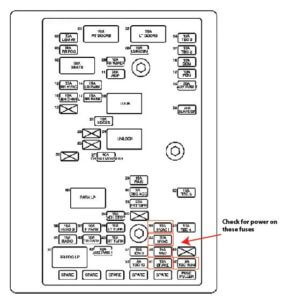
Chevrolet rear fuse box diagram
Check power at base of steering column
Disconnect connector C201 at the base of the steering column. With the key in the RUN position, check for battery voltage on terminals D1 and B5. If you detect LESS than full battery voltage at D1, check voltage at B5. Both should have full battery voltage. If not, replace the ignition switch
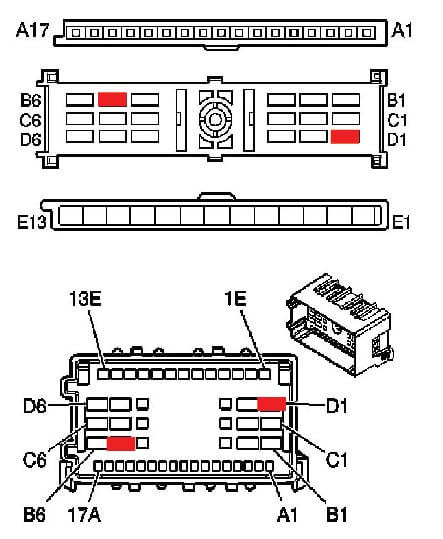
Connector C201 at base of steering column
Replace ignition switch
Disconnect battery
Disable airbag system and wait for it to power down
Remove the hush panel and knee bolster
Remove the steering column trim covers
Insert the key and turn to RUN position.
Push a hex key into the hole on top of the lock cylinder and push down. Pull the lock cylinder straight out.
Use tool J42759 or another tool to release the lock tabs holding the ignition switch in place.
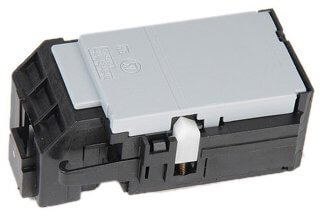
Chevrolet ignition switch
Pull the IGN switch out of the lock cylinder housing. Disconnect the electrical connector
DO NOT ALTER the position of the GEARS between the lock cylinder and the ignition switch. You MUST verify that the gear is in the proper position before installing the new switch. If you don’t, the misalignment will cause the switch to remain in partial ON position and drain your battery. Insert a screwdriver and turn the gear to align if you’ve moved it.
Insert the new IGN switch and make sure the tabs lock into the lock cylinder housing.
Once in place, use a screwdriver to operate the IGN switch to confirm it’s aligned and working properly BEFORE you reinstall the lock cylinder
©, 2018 Rick Muscoplat
- Trailblazer
- cruise control not working
Hyundai Cruise Control Not Working (9 Ways to Fix)
Cruise control is one of the best features in the latest cars that allow you to drive on long routes without maintaining the speed because you just set the speed of your car.
But it is sometimes quite frustrating when your cruise control stocks or does not work correctly.
If you are facing the same issue and do not know how to fix this problem, then don’t worry because I will tell you all the possible reasons and fixes for this problem.
Let’s dive into:
Table of Contents
How to Fix Hyundai Cruise Control Not Working?
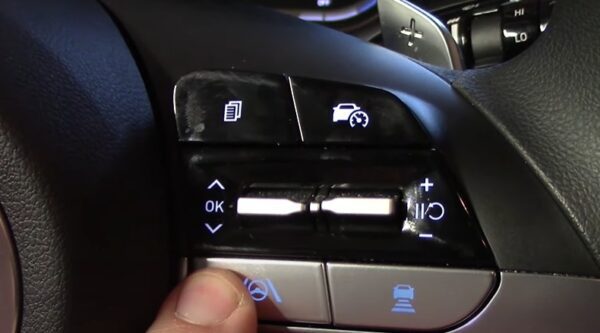
It could be anything that is directly connected to your cruise control system. The blown fuses or the brake lamp might not work correctly.
1. Check the Fuses
The first thing you should have to check is the fuses in your car because all the electric system in the car is connected through fuses.
If one of the fuses blows and does not respond, it could lead the car to non-function of the cruise control.
Check the fuses inside the dashboard and ensure that all the fuses are working fine. If you find any fuse blown, remove it from the circuit and replace it with the newer one.
After replacing the fuse, your cruise control will start working , and you can check it by driving.
2. Speed Sensor
The second thing directly connected to the cruise control is the speed sensor. Cruise control fixes your car’s speed as required or set through the cruise control button.
If the speed sensor is faulty and does not provide the correct speed reading, it could confuse the cruise control and stop working.
Speed sensors are available on almost four wheels of your car, and a single sensor fault will lead the cruise to stop work. Check the speed sensor by yourself and if you cannot do this, then take your Hyundai to the technician and ask him to check the speed sensors.
If you find that the speed sensor is not working correctly, then replacing that sensor is the solution for you.
3. Cruise Control Switch
Sometimes your cruise control switch becomes faulty and does not pass the signals, so your cruise control stop works.
It could occur due to a short circuit or overheating of the engine.
Check the cruise control buttons and see whether they are responsive or not.
If these buttons do not respond on pressing, then you should have to replace your cruise control switch. Sometimes the cruise control buttons get stuck and do not function accurately.
You could buy a new switch and replace it with the older one. But I will recommend you take your Hyundai to a technician.
4. Check the Brake Lights
Brake lights are directly integrated with cruise control, and if the brake light bulb has blown or not working correctly, it could fail cruise control.
A brake padel error or fault will stop cruise control from working. Press the brake padel and see if your brake light and tail light work by applying the brakes.
If the brake lights do not work, replace the brake light bulb and the tail light if it does not work.
5. Engine Problems
The engine may also lead you to cruise control problems due to overheating or improper maint of the engine. If you have driven your Hyundai for a long distance without giving your car rest, your engine may be overheated.
Engine problems could also occur due to improper maint of the engine, like you do not replace engine oil regularly and not maint the engine regularly.
If your car engine is overheated, stop it and turn it off for 10-15 minutes or until its engine cools down.
Also, replace the engine oil regularly and take care of the maintenance of your car engine regularly.
6. Throttle Position Sensor
The throttle position sensor is the central part of your cruise control, and if it fails to work, it will stop your cruise control from working.
You should examine whether your throttle position sensor is working correctly or not. Your car will produce black exhaust or could create dead spots if the position sensor is faulty.
To fix the problem, take your car for a replacement of the throttle position sensor to a technician. The throttle position sensor will cost you almost $160 to $200.
7. Turn Off the Lights
it is silly to say that sometimes your brakes light stops working when you turn on the front lights.
A user said on Hyundai Forum, “I’m having this issue, but I found that if I turn the lights off, the cruise works; however, I’ve noticed that my brake lights don’t work when lights are on. So turning the lights off engages the cruise, but turning them on makes it disengage fine for daytime driving but a massive issue for nighttime driving.”
You could also try this method by turning off the front lights of your car; maybe you are facing the same problem.
But replacing the rear lights could be the permanent solution to this problem.
8. Slippery Road
Cruise control did not work correctly on a slippery road. Because if you apply the sudden brakes on the slippery road, that could damage your car’s brakes or tyers.
And this will lead to cruise control failure.
Try not to use the cruise control while driving on a slippery road or in stormy weather because the cruise control would not work correctly.
9. Electric Fault
Electric supply malfunctioning may also create cruise control problems. Check all the wires are connected correctly and the wiring has no loose connection.
Also, make sure that your car battery is working fine because due to the low-voltage electric system of your car does not work.
To fix the problem, fix all the connections and do not leave a single loose connection; also, ensure that your battery provides accurate voltage.
Hyundai Bluetooth Not Working
Hyundai Wireless Charger Not Working
Toyota Tundra Cruise Control Not Working
Hyundai Smart Trunk Not Working
Nissan Frontier Cruise Control Not Working
Related Posts
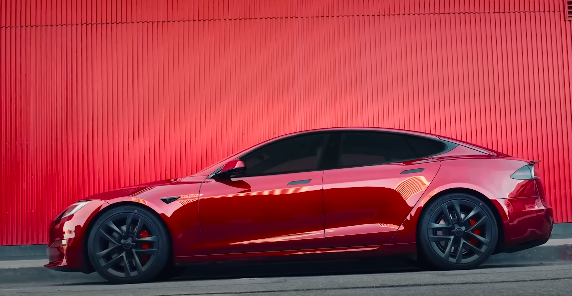
Why is My Tesla Only Charging At 16 Amps
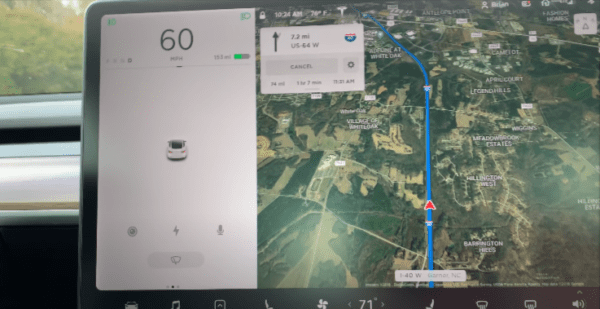
Tesla Not Showing Cars Around Me [How to Fix!]
Leave a comment cancel reply.
Your email address will not be published. Required fields are marked *
Save my name, email, and website in this browser for the next time I comment.

IMAGES
VIDEO
COMMENTS
The most common reason a cruise control stops working is due to a blown fuse or a defective brake pedal switch. It can also be caused by issues with the throttle control system or the ABS. In older cruise control systems, it can be caused by a broken vacuum line. Here is a more detailed list of the possible reasons your cruise control is not ...
The brakelight switch in these trucks is a 4 pin, single plunger 2 stage switch. The first stage is 1mm and it kills the cruse control. or if open/closed whichever is the NOT the normally left in position it won't affect the brake lights but WILL keep cruise from coming on.
Discover why your brake lights might not be working. From burnt-out bulbs to bad sockets, get insights on common brake light issues and how to fix them. ... Other symptoms might include issues with the gear shifter or the cruise control not working properly. Tagged brake brake light brakes (404) 252-3014. New Location 8155 Roswell Rd. Sandy ...
Some cruise control systems are disabled when the brake lamp is blown. Check your brake lights. If you find a burnt brake light, just replace it and test the system again. Reason #3. Defective brake light switch. A defective pedal switch can also make your cruise control stop working.
Symptom 1 — brake pedal does not disengage cruise control. There's a switch fixed to the bases of the brake pedal and if cruise control does not deactivate when braking then it's a sign that this switch is faulty. Symptom 2 — Hissing noises are heard from under the dash. The cruise control switch is a vacuum system and for some vehicles ...
Yup, cruise controls have a switch to toggle them off when you touch the brake pedal, and many use the same switch as the brake lights. If one of the brake lights has failed, the cruise control ...
If your brake lights wont turn off or your cruise control won't turn on, there is a pretty good chance that its just two tiny plastic stoppers that have brok...
Faulty brake light switch (sometimes integrated with the cruise control switch) Faulty 'cork spring' or 'spiral cable' - as mentioned this connects the steering wheel controls to the car's computer. There are many reasons why your car's cruise control system is not working, including brake light switch faults; worn out control ...
If your brake lights stay on or your Cruise control will not set this may be your problem. A little stop on the brake pedal frame is the cause. An easy fix. ...
2. Blown Fuse or Relay. Another pretty common reason that cruise control might not be working is because of a blown fuse or relay. These are usually located in the fuse box under the hood. If you think this might be the case, then you can just check the fuse box to see if there's a blown fuse or relay.
Brake Lights - In some systems, cruise control is disabled when a brake light is blown. Aftermarket lighting, such as LED brake light conversion, might trick the CCM into thinking a brake light is blown, as LED bulbs draw less current than incandescent bulbs. Fuses and Relays - On some vehicles, fuses and relays are used to protect the ...
Additionally, issues with the speed sensors will also trigger a check engine light or ABS warning light on your car's dashboard. 3. Faulty Brake Pedal Switch. Usually, having a faulty brake pedal switch is the main reason why your cruise control would stop working.
2004-2012 (1st Generation) Chevrolet Colorado Brake Light and Cruise Control not working and fix. These are only the most likely brake/cruise fixes. There ...
Inspect the fuse to see if it is blown. If the metal strip inside the fuse is broken, it needs to be replaced. Check the relay by swapping it with another relay of the same type in the fuse box. If the cruise control starts working with the swapped relay, the original relay is likely faulty and should be replaced.
I just bought a 2010 GMC Sierra 4.8L V8 and went to use the cruise control one day and it didn't work. I saw something about replacing the brake light switch so I replaced that and the cruise control still doesn't work. The light on the dash doesn't even come on. Any help is appreciated, thanks!!
As most of you know, the most common issues with non-working cruise control usually have to do with failed brake/clutch switches or broken wires from the stem switch. Thus began my excursion under the dash a few years ago. On occasion I would get a wild hair and decide to try to chase this down. I replaced the brake switch.
Originally Posted by tcp2. The CC is a result of the lights being on all the time. Pressing the brake disengages the CC so it will never set when it thinks you are on the brakes. Hunt down the light issue. That makes sense, truck thinks the parking brake is engaged so it won't allow cruise control. Reply Like.
Common reasons for cruise control failure include faulty brake light switches, worn-out cruise control switches, and electrical problems. ... If your cruise control is not working properly, follow these troubleshooting tips to diagnose and resolve the problem. By going through each step, you can identify the underlying cause and take ...
Cruise control not working, ABS light on, brake light on Diagnose and fix cruise control not working on GM vehicles. The infamous GM ignition switch failures can show up in many ways. One that baffles many people is when they the cruise control not working along with the ABS light on and the Red brake light on.
Here is what I've done so far to remedy the brake lights and cruise control not working on my 2007 GMC CANYON 4x4 SLE: 1) Replaced the Brake Light Switch on the brake pedal - NO CHANGE 2) Replaced the 3rd Brake Lights on the upper back side of the cab, they were both toast so I replaced them and they are working when the brakes are applied ...
If the brake lights do not work, replace the brake light bulb and the tail light if it does not work. 5. Engine Problems. The engine may also lead you to cruise control problems due to overheating or improper maint of the engine. If you have driven your Hyundai for a long distance without giving your car rest, your engine may be overheated ...